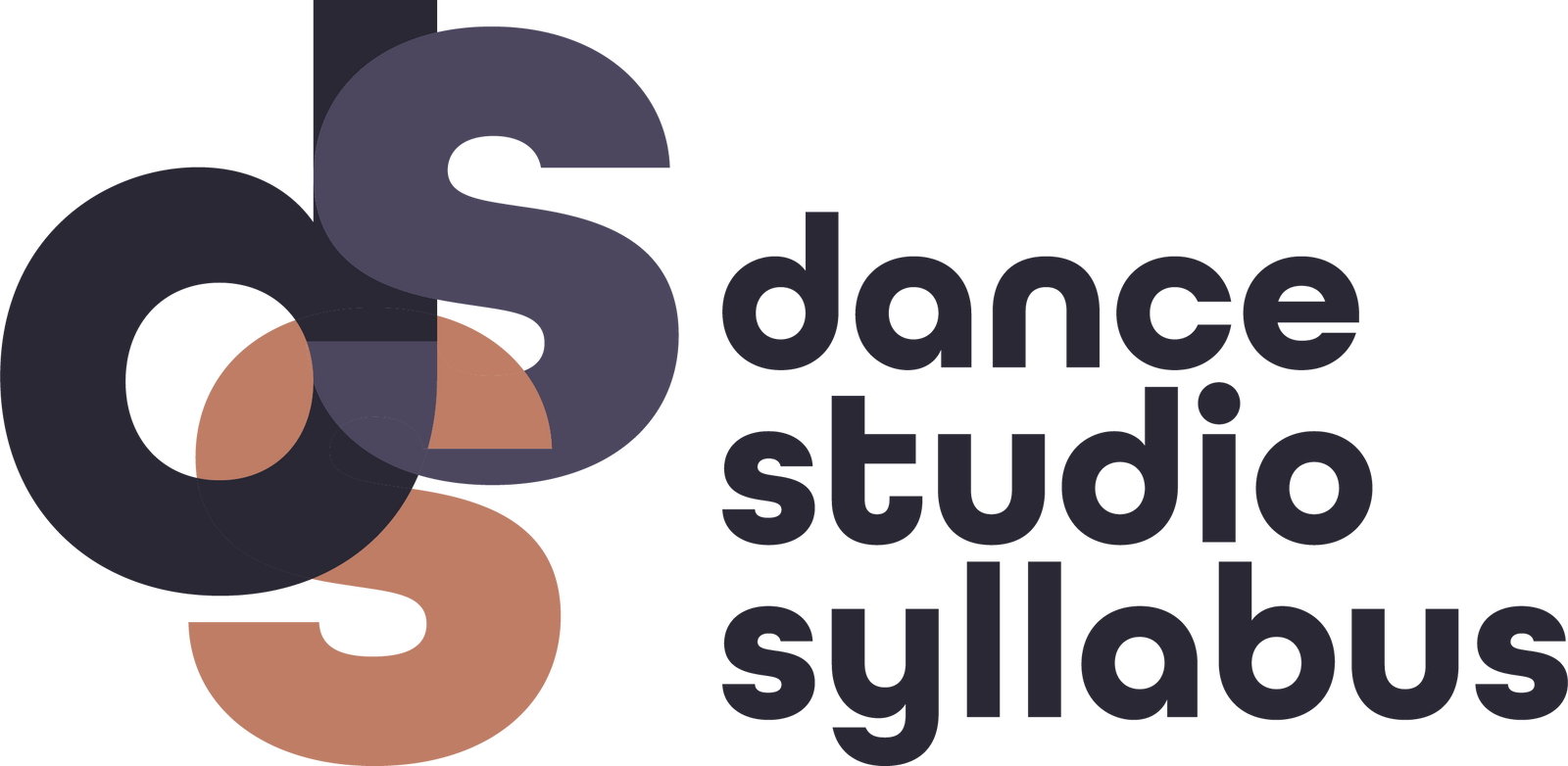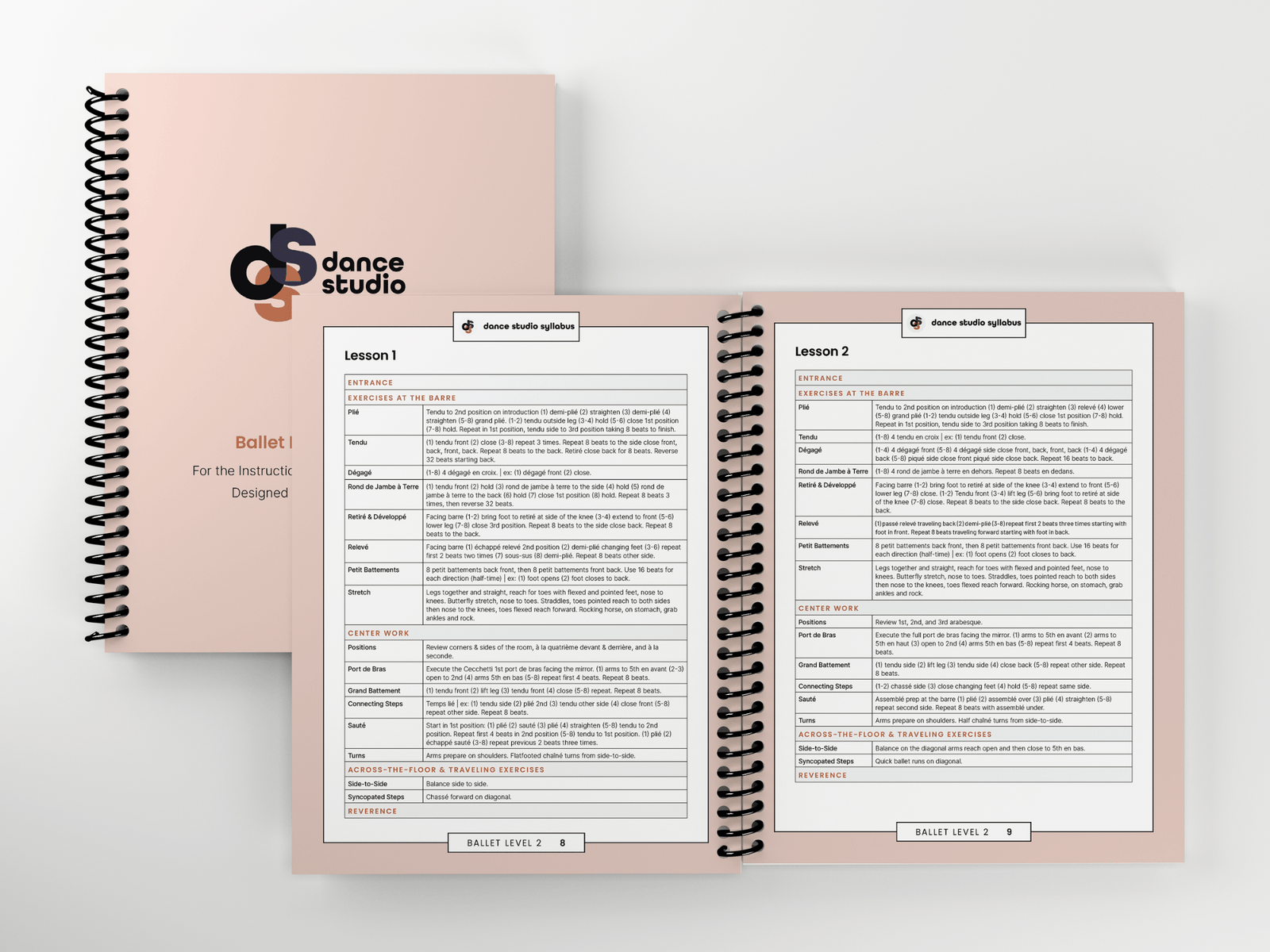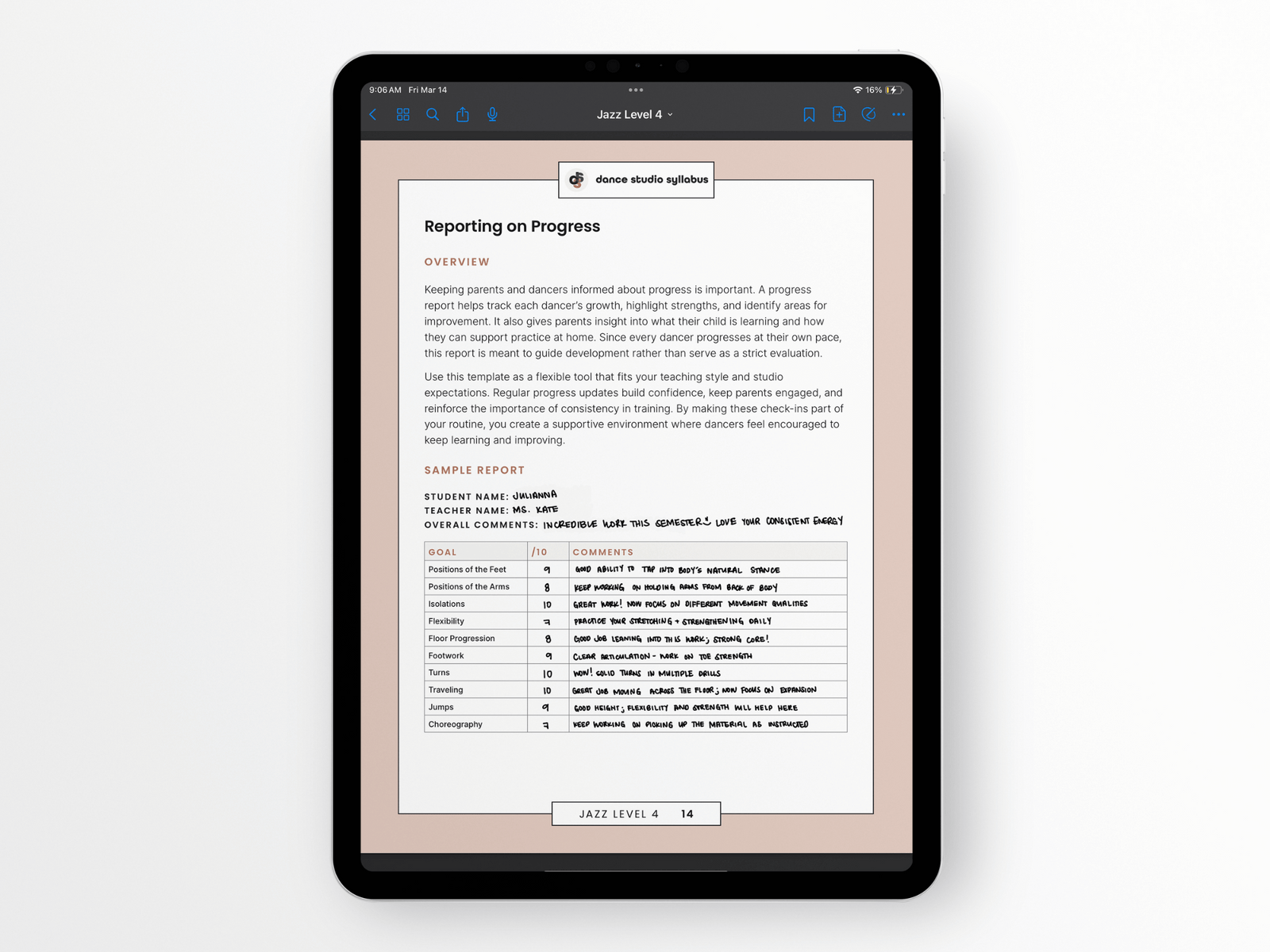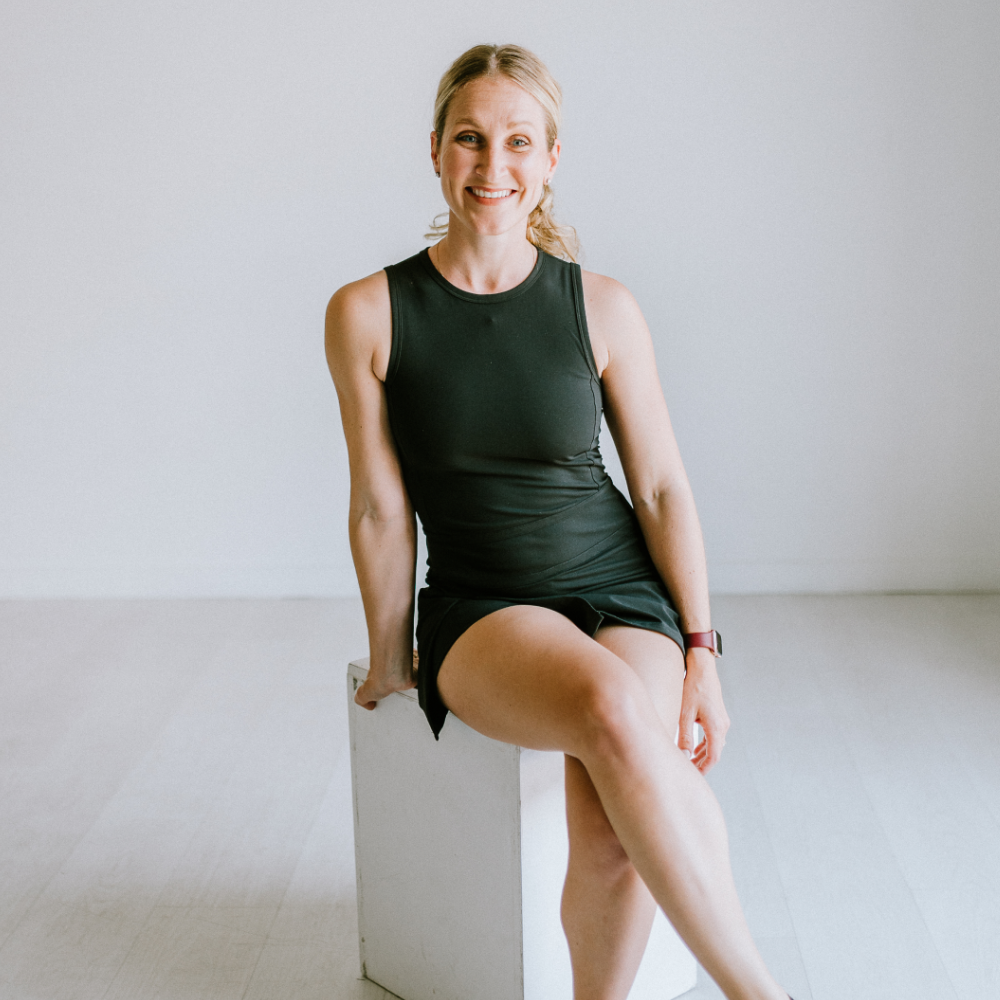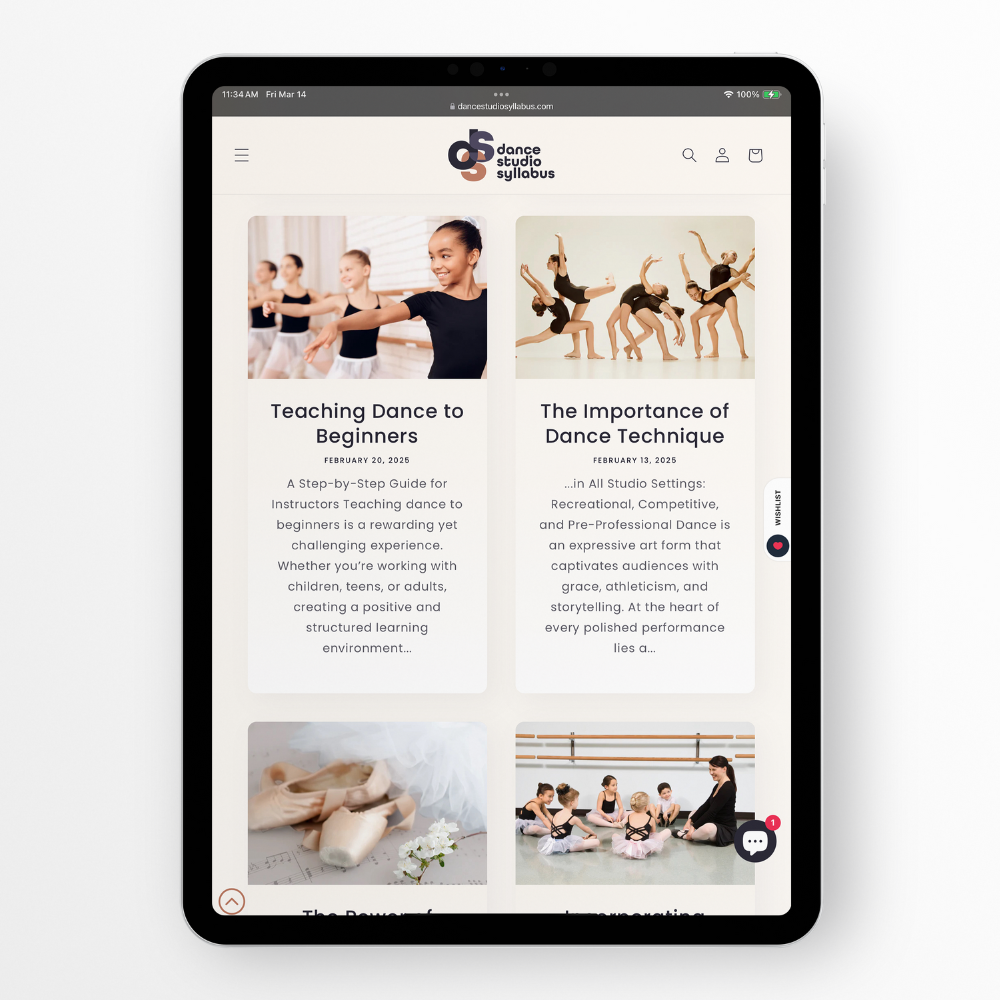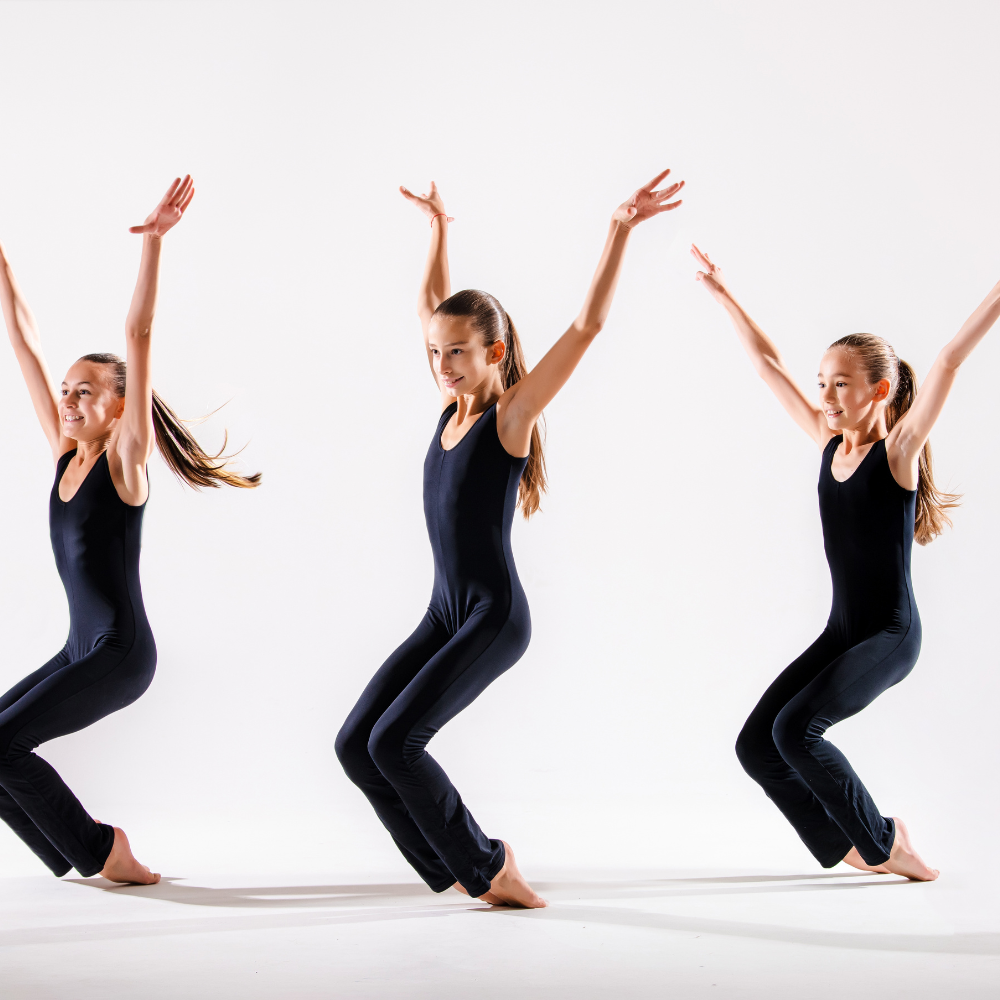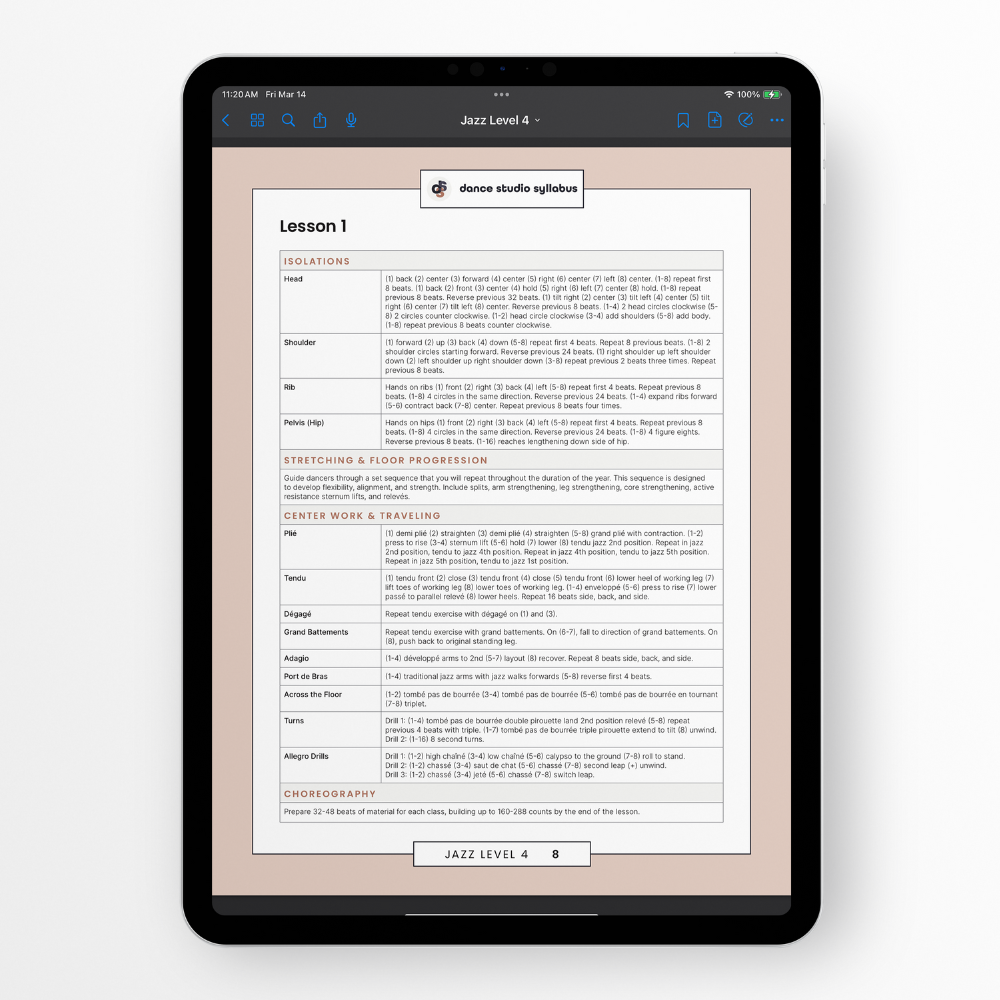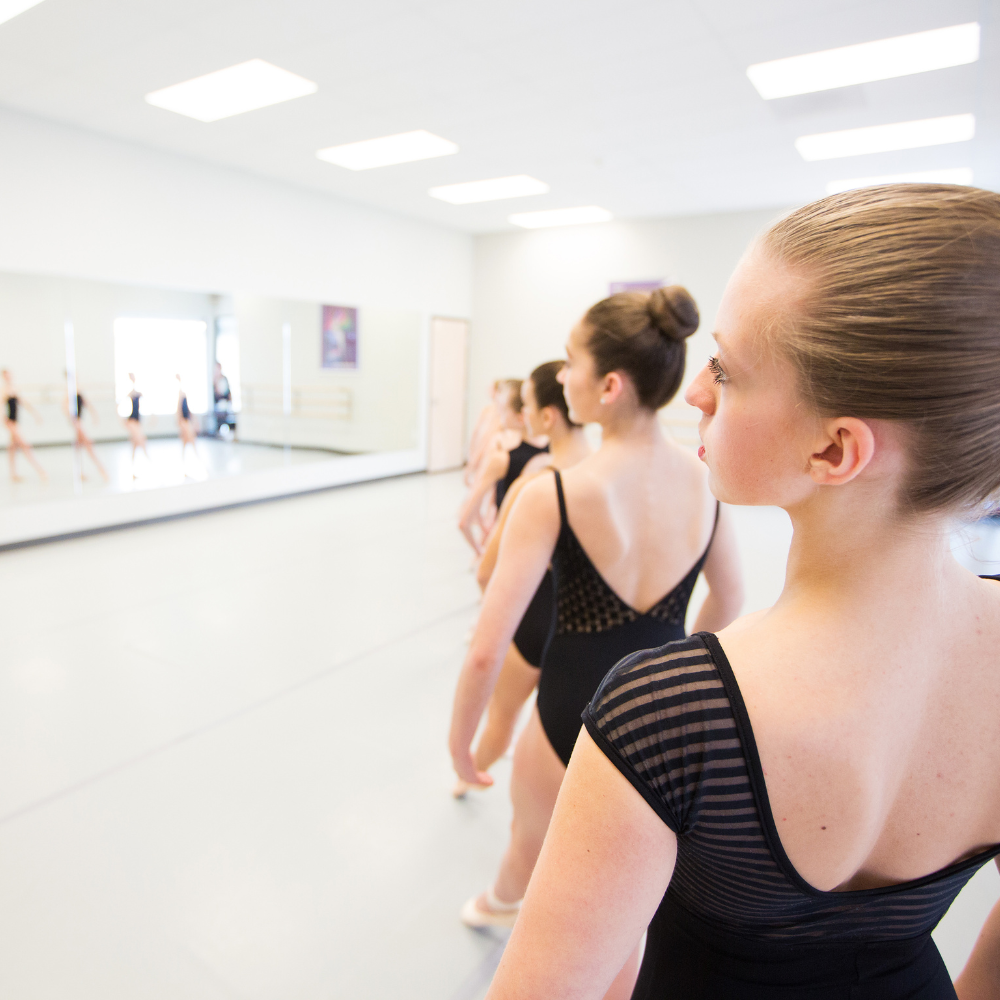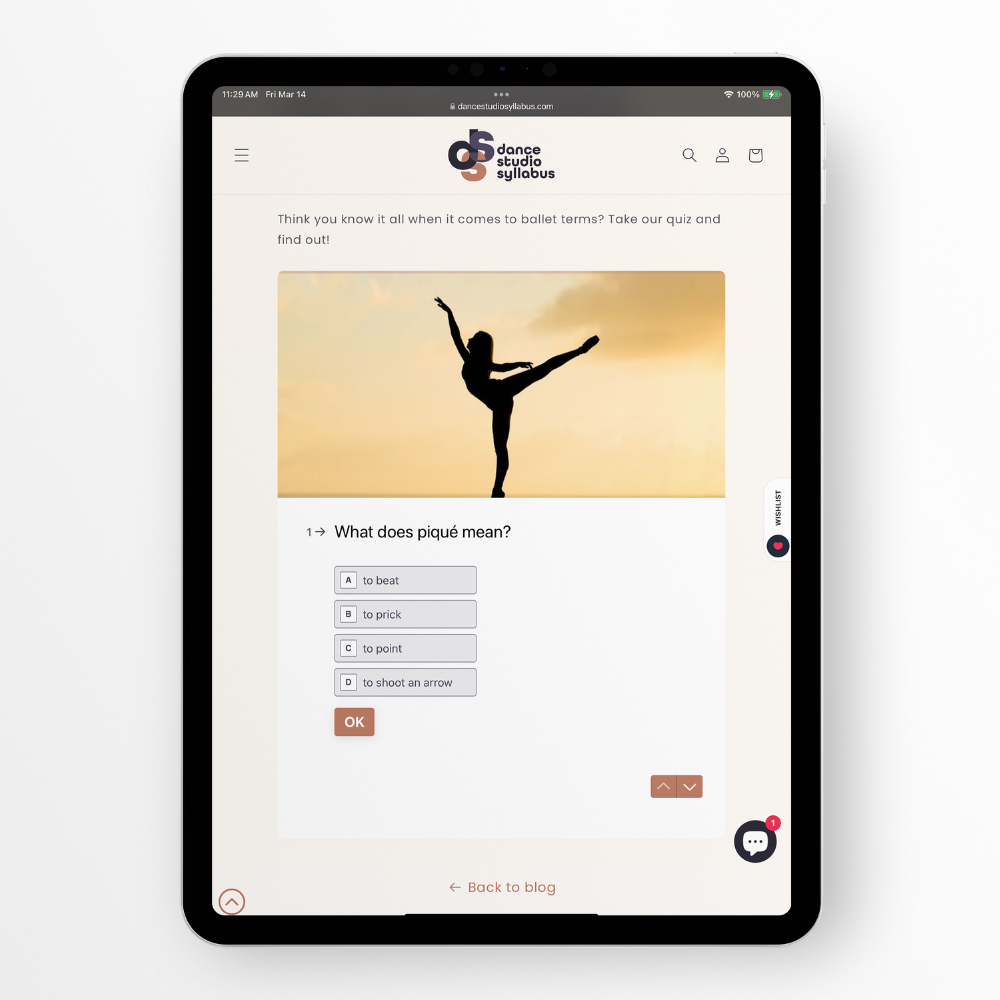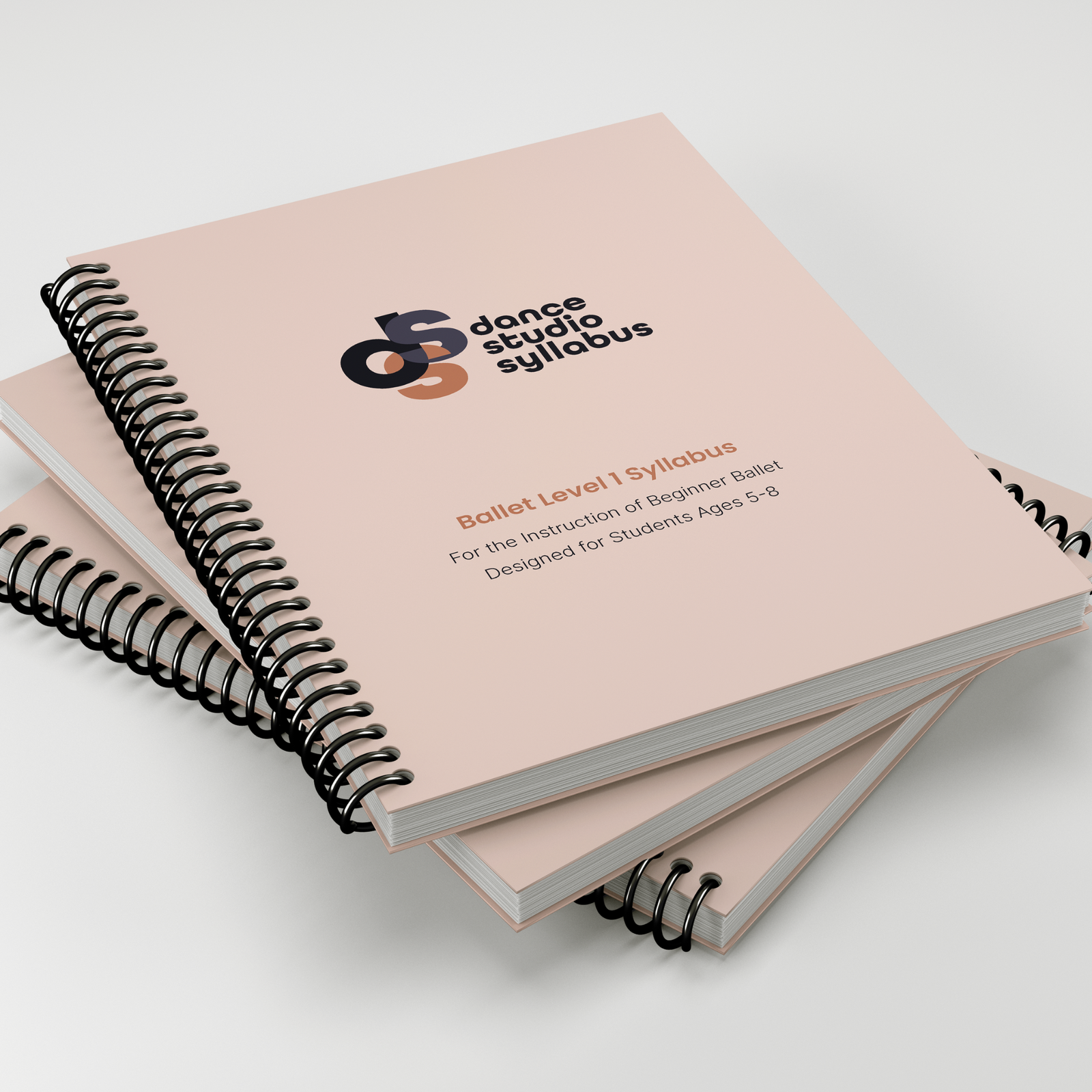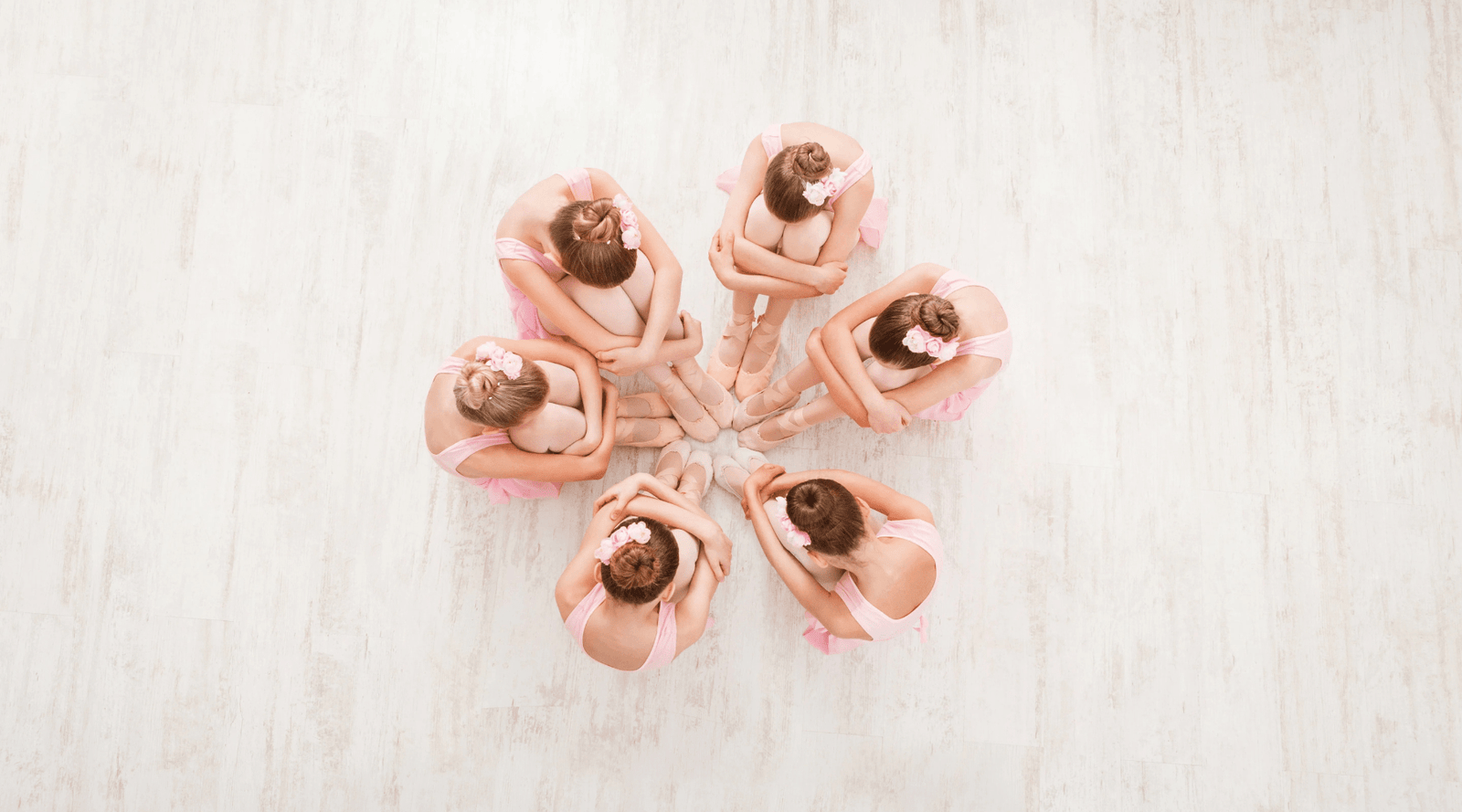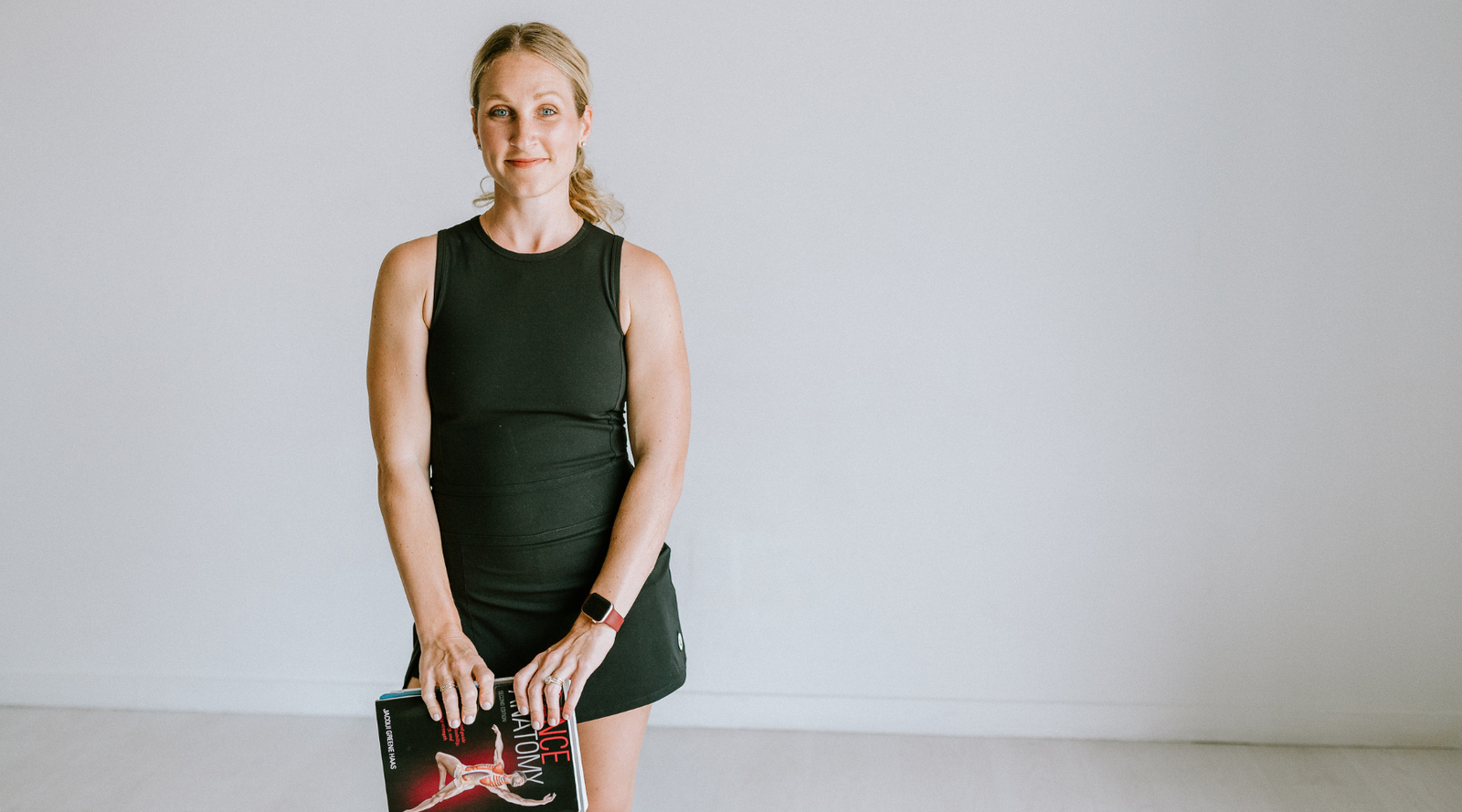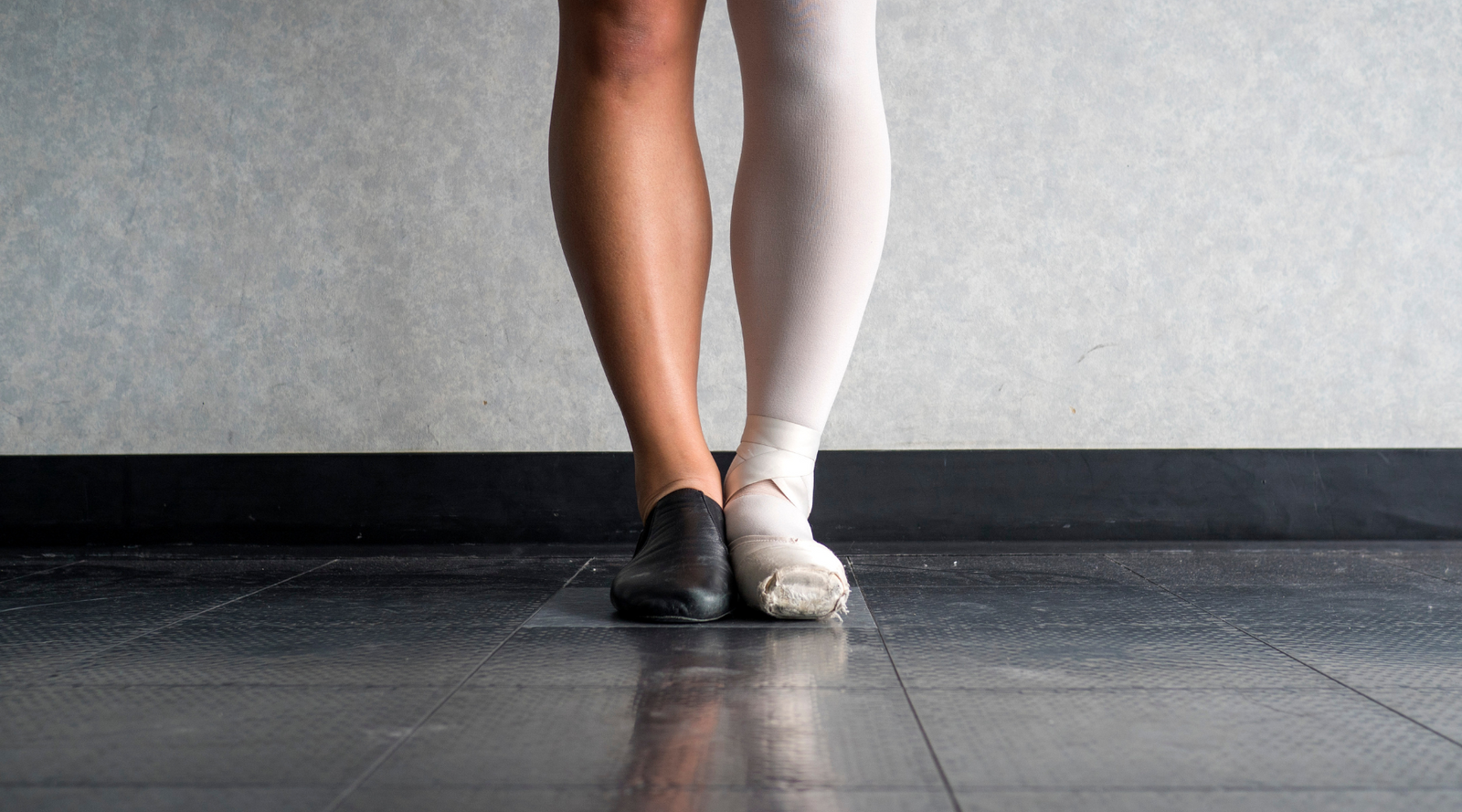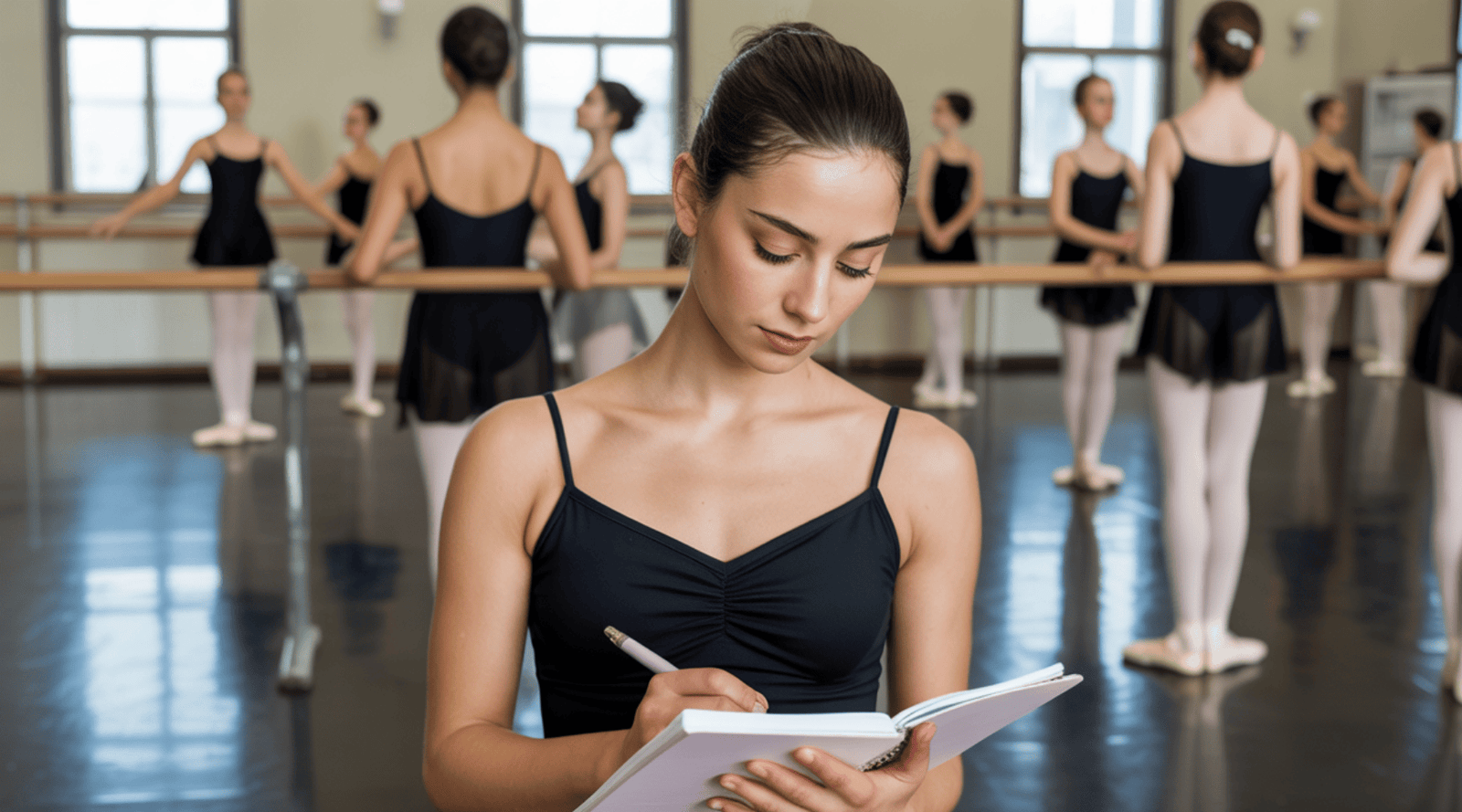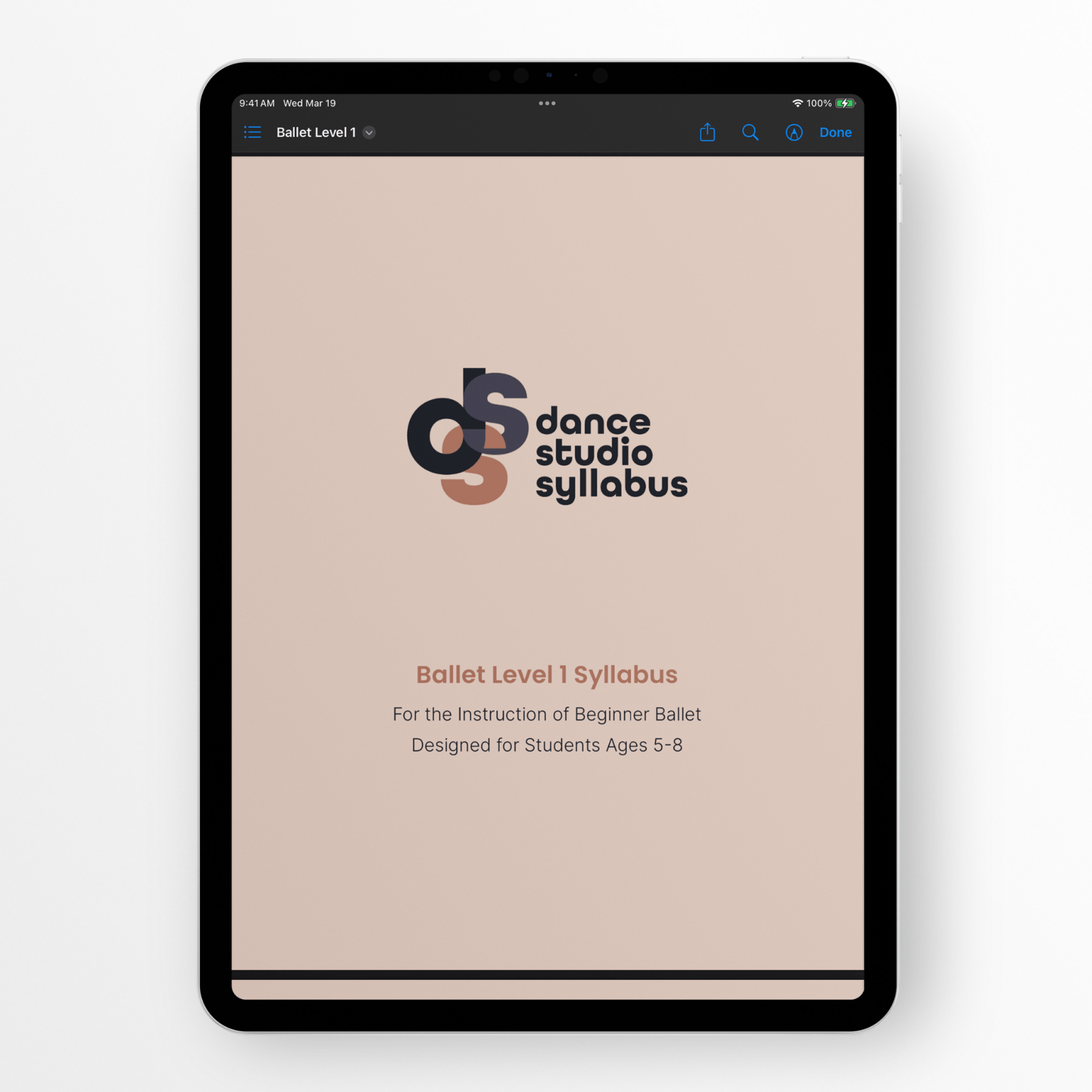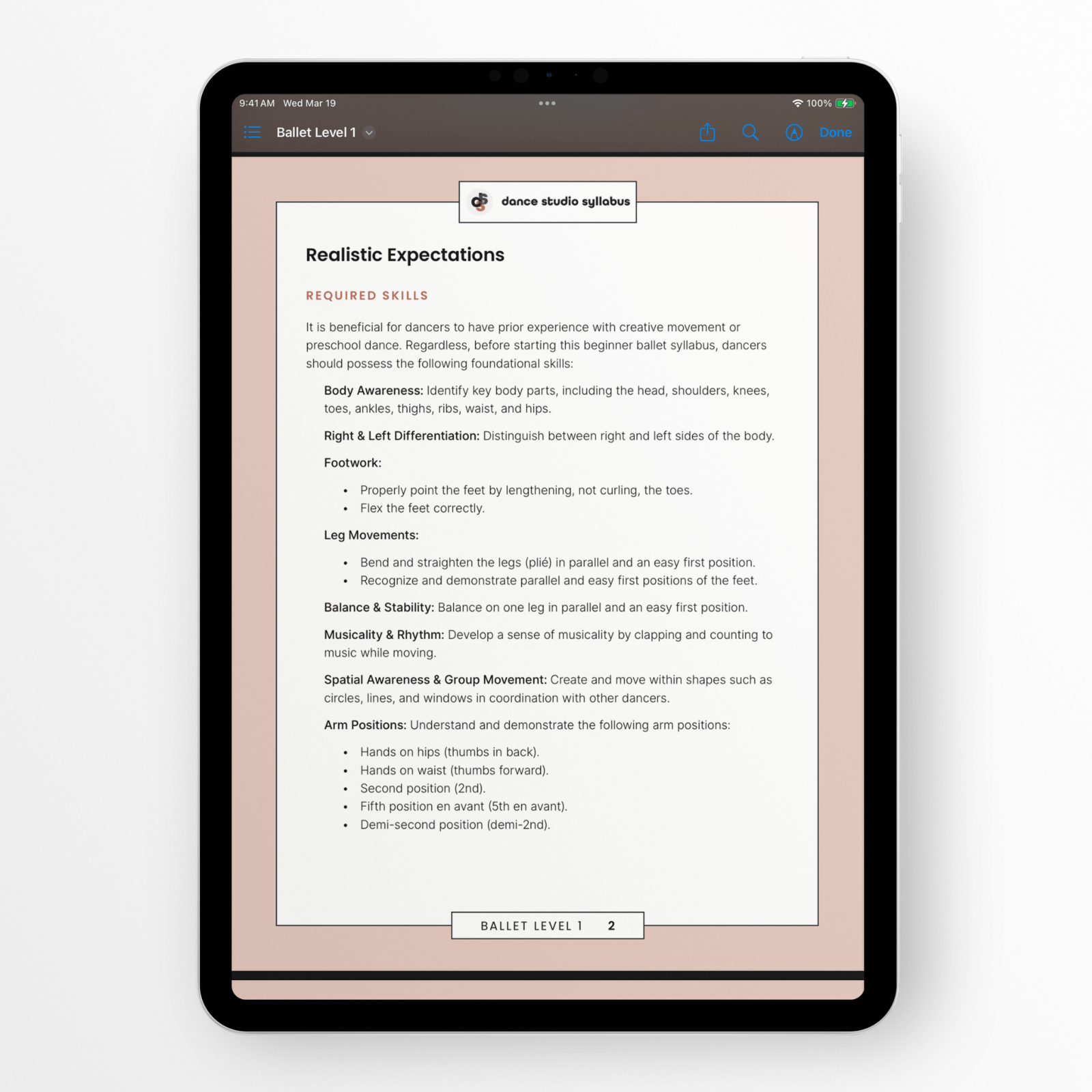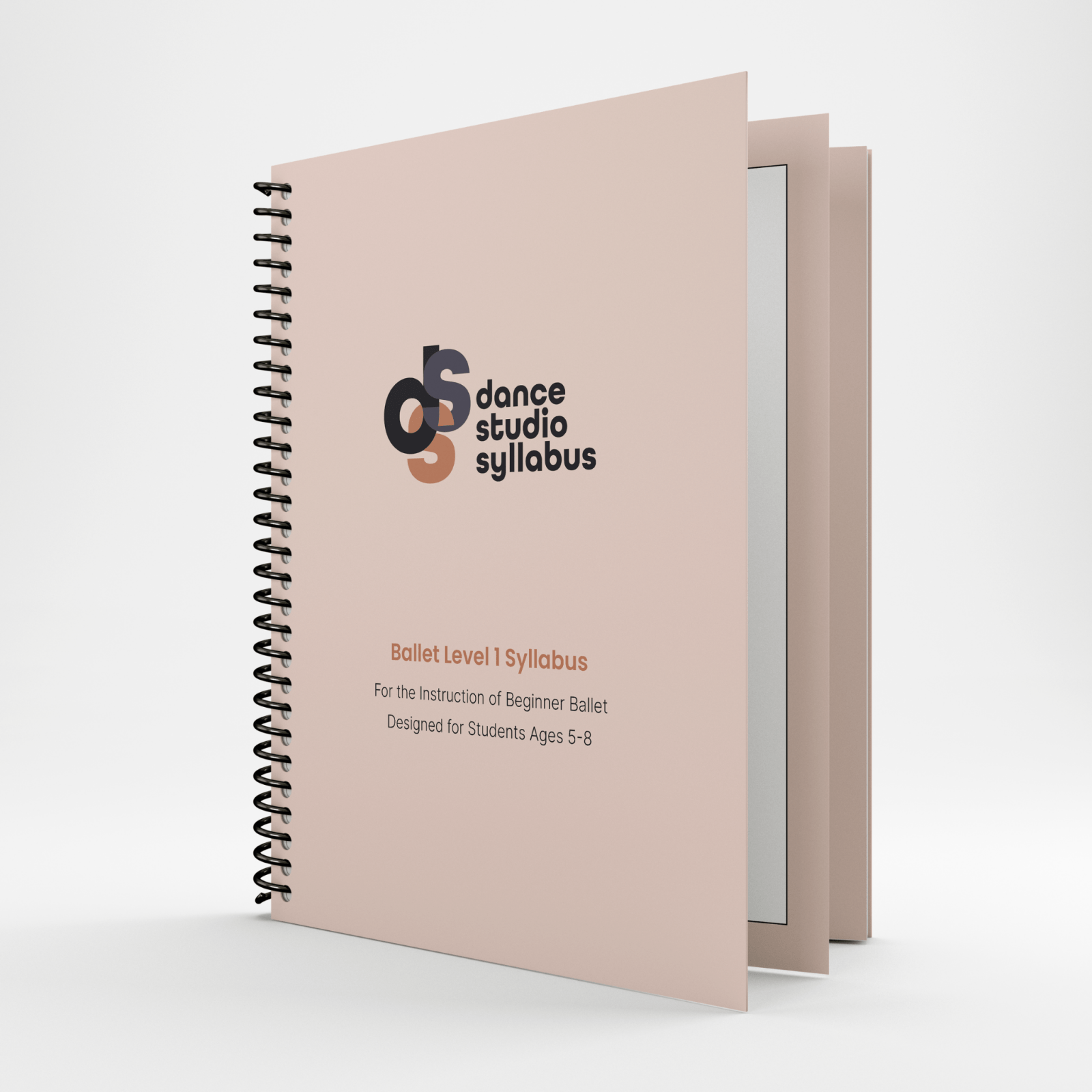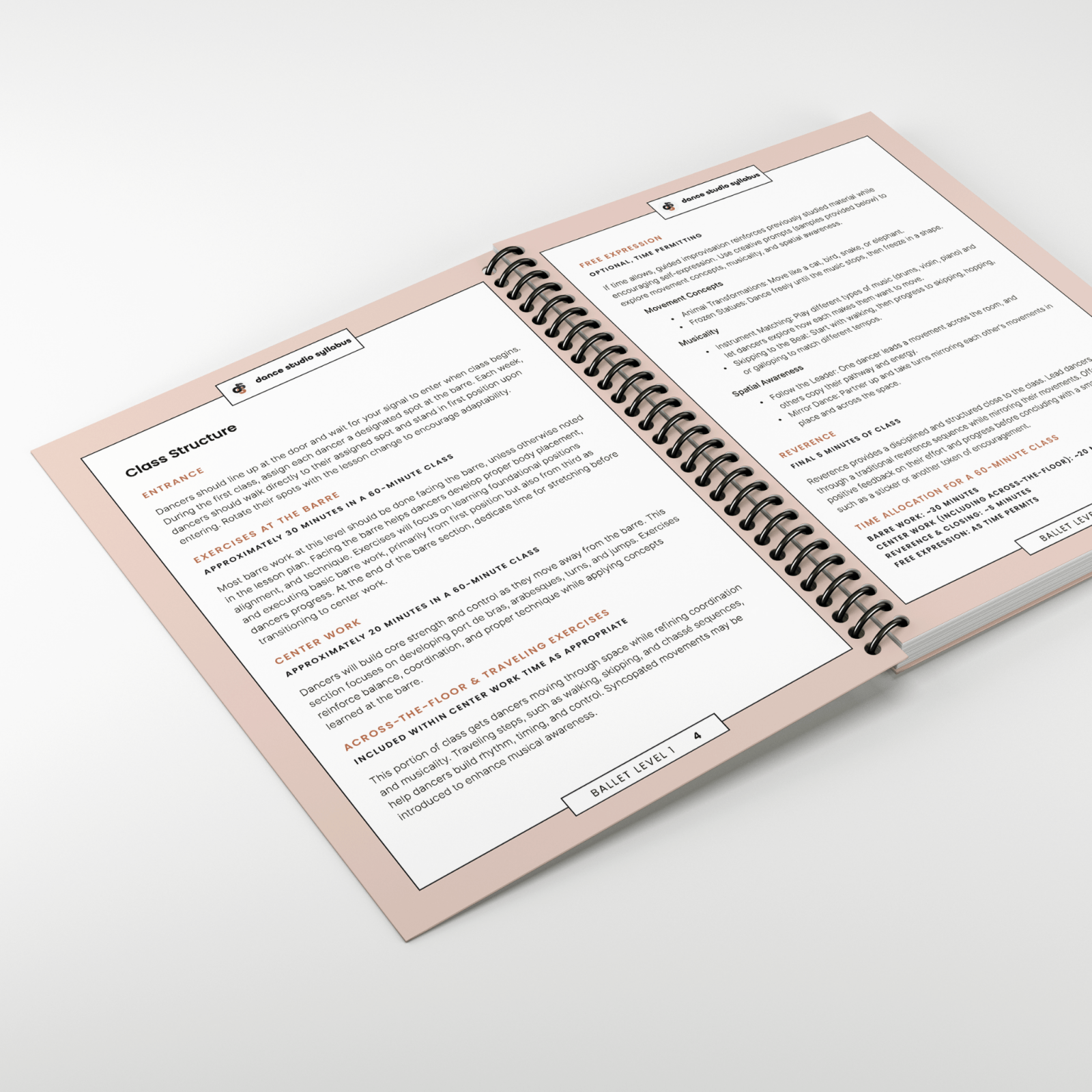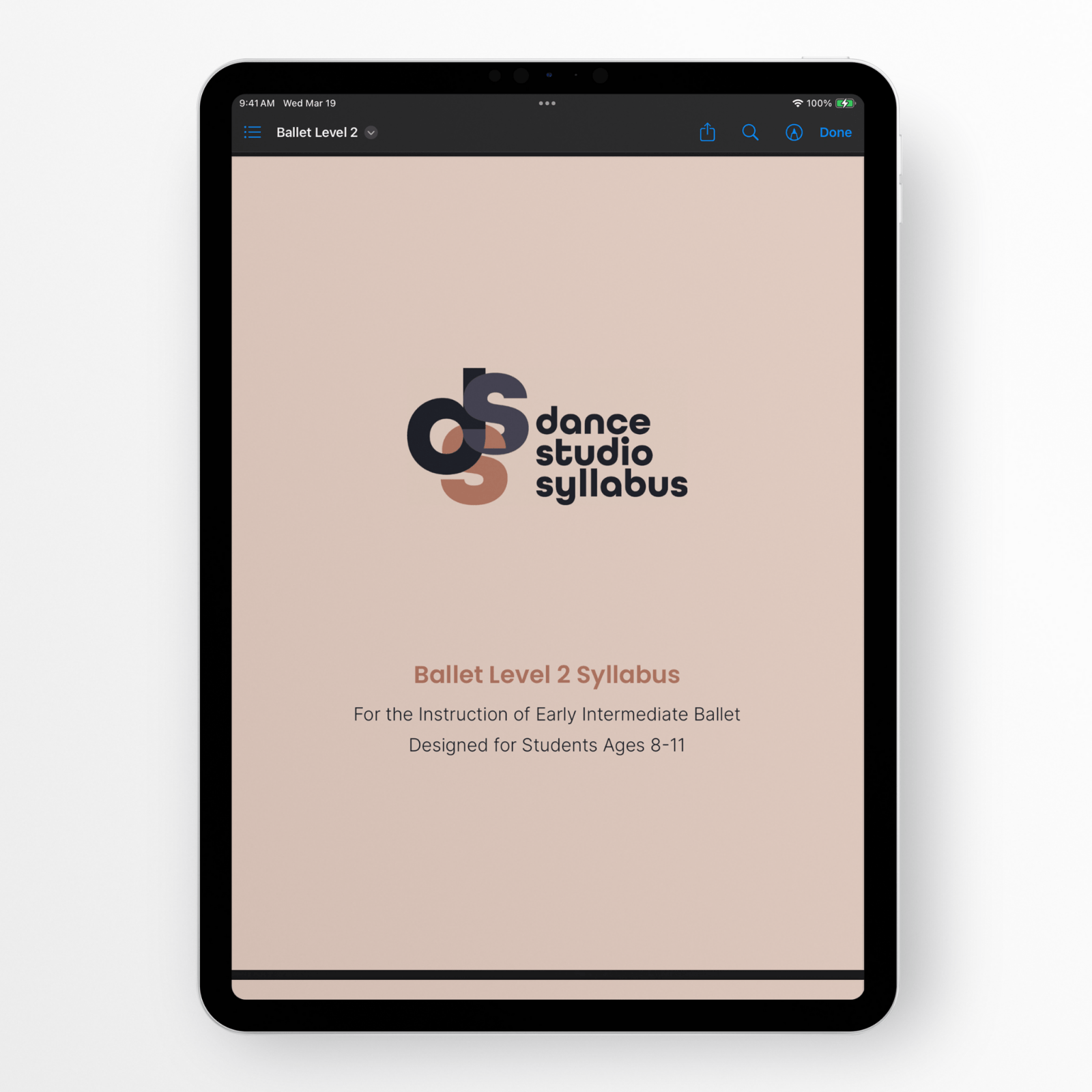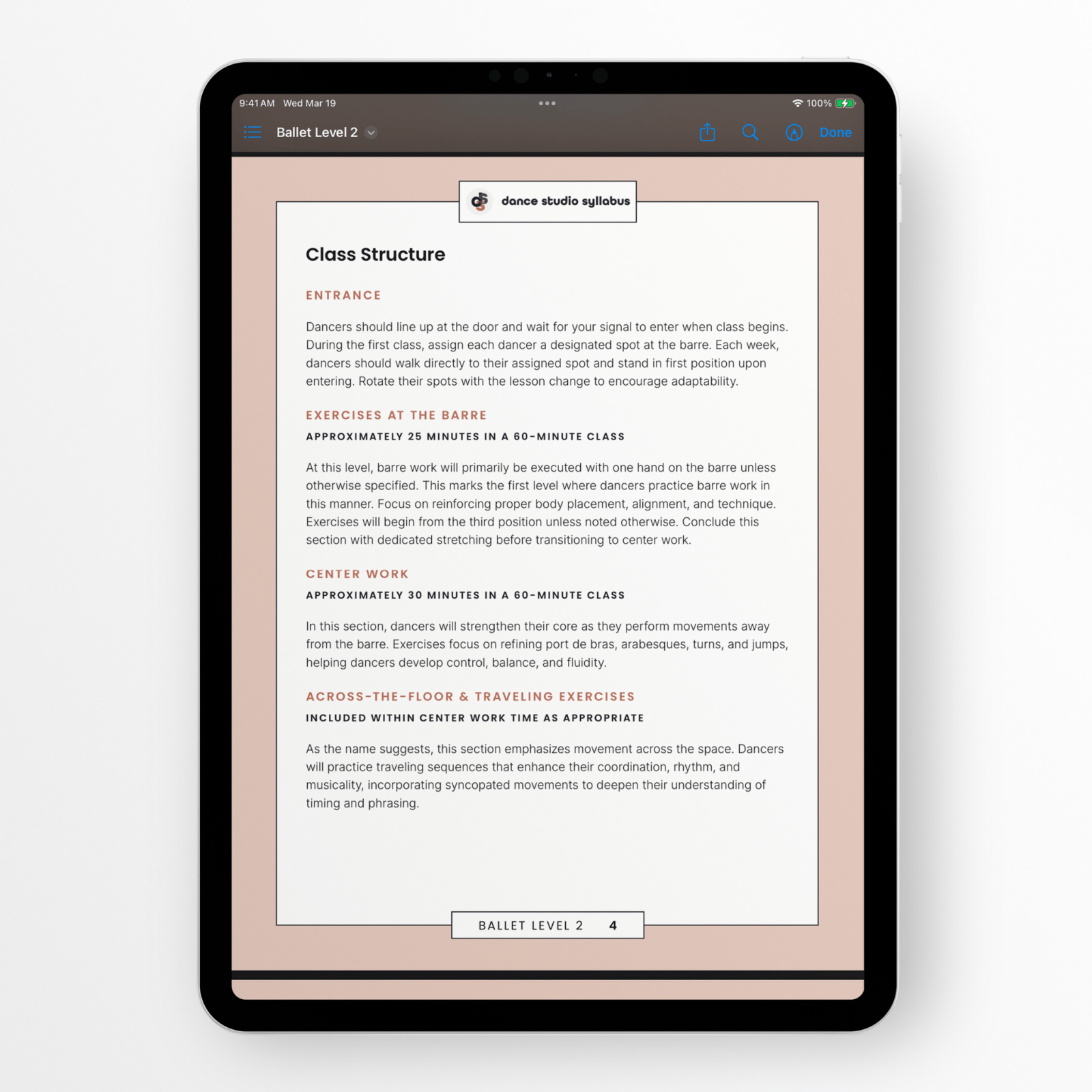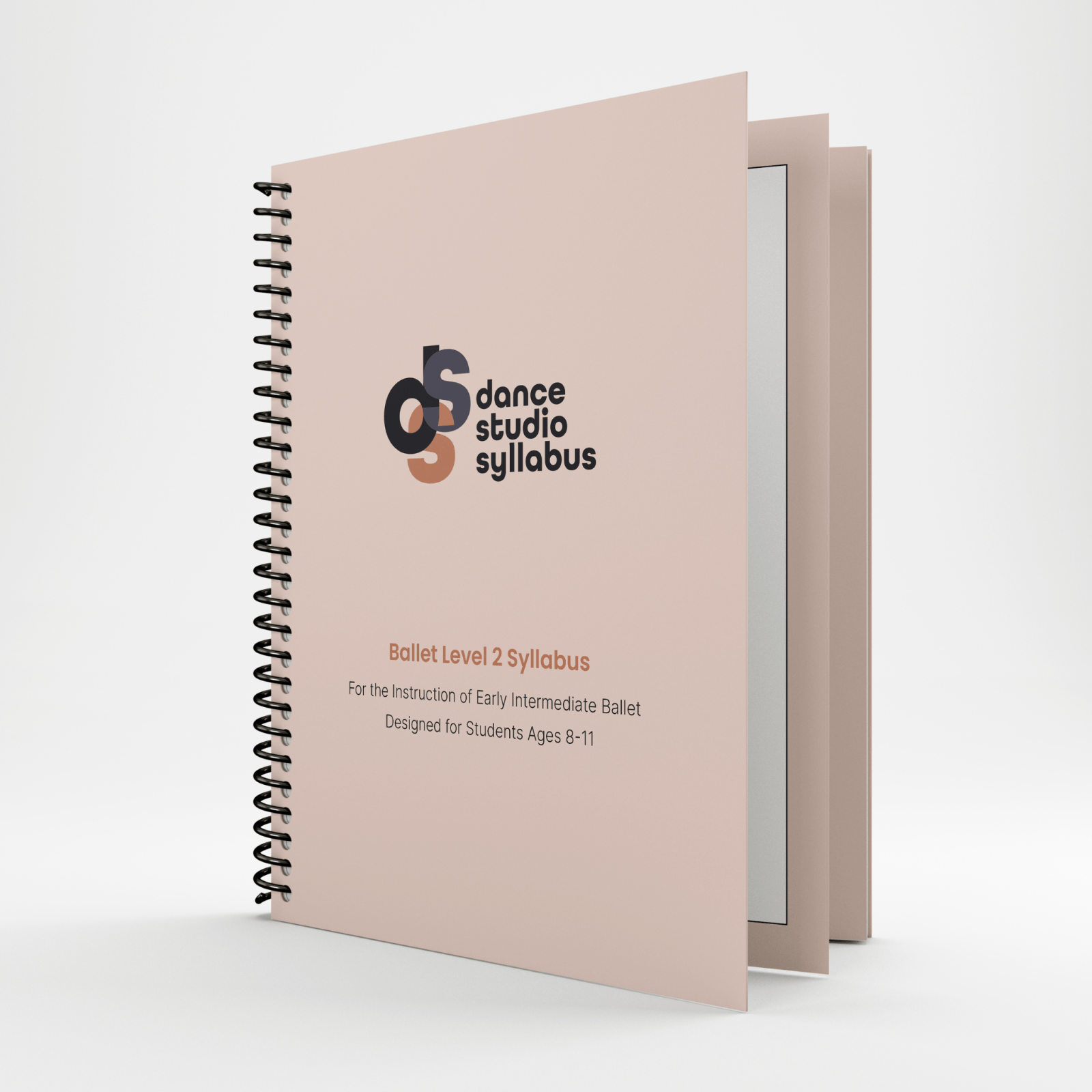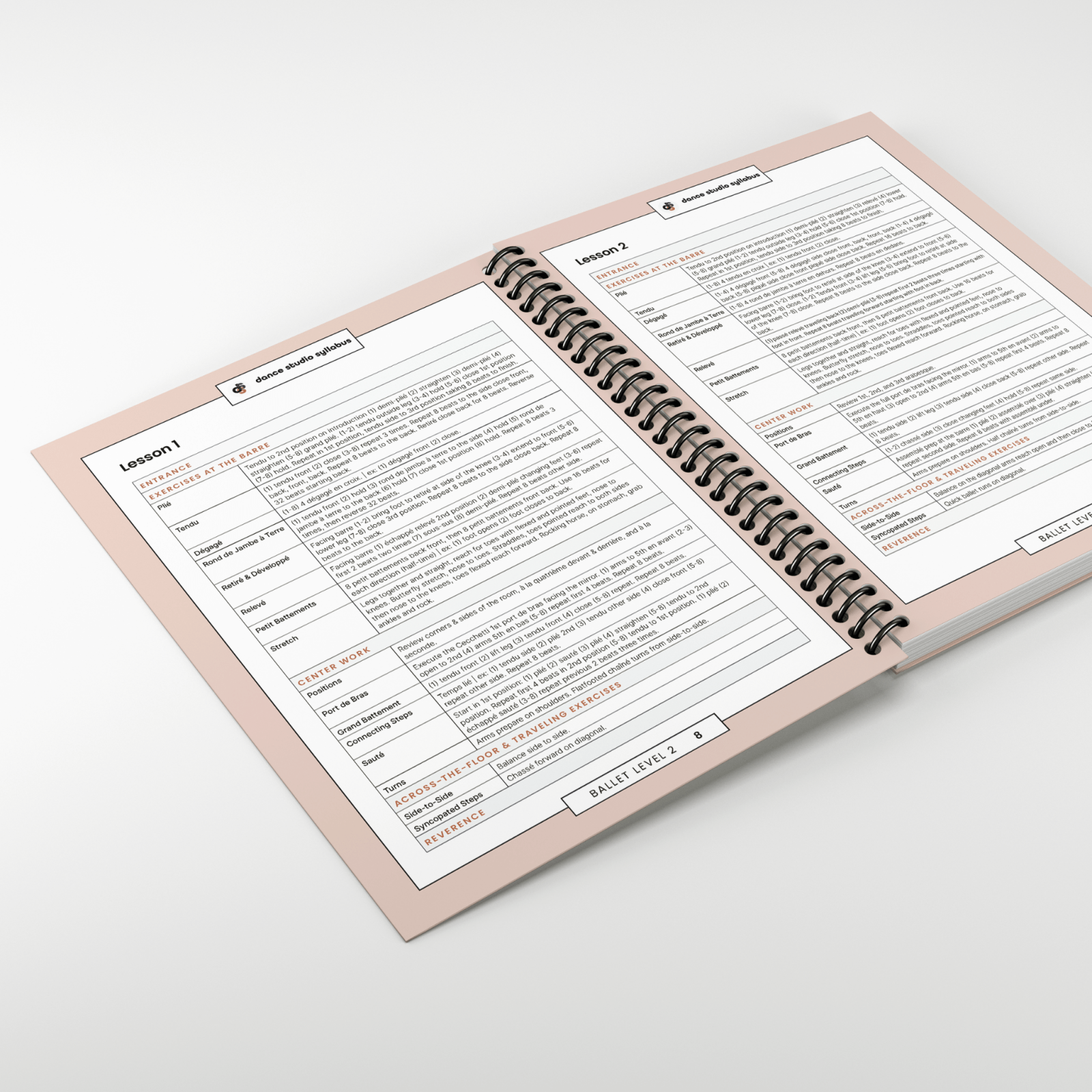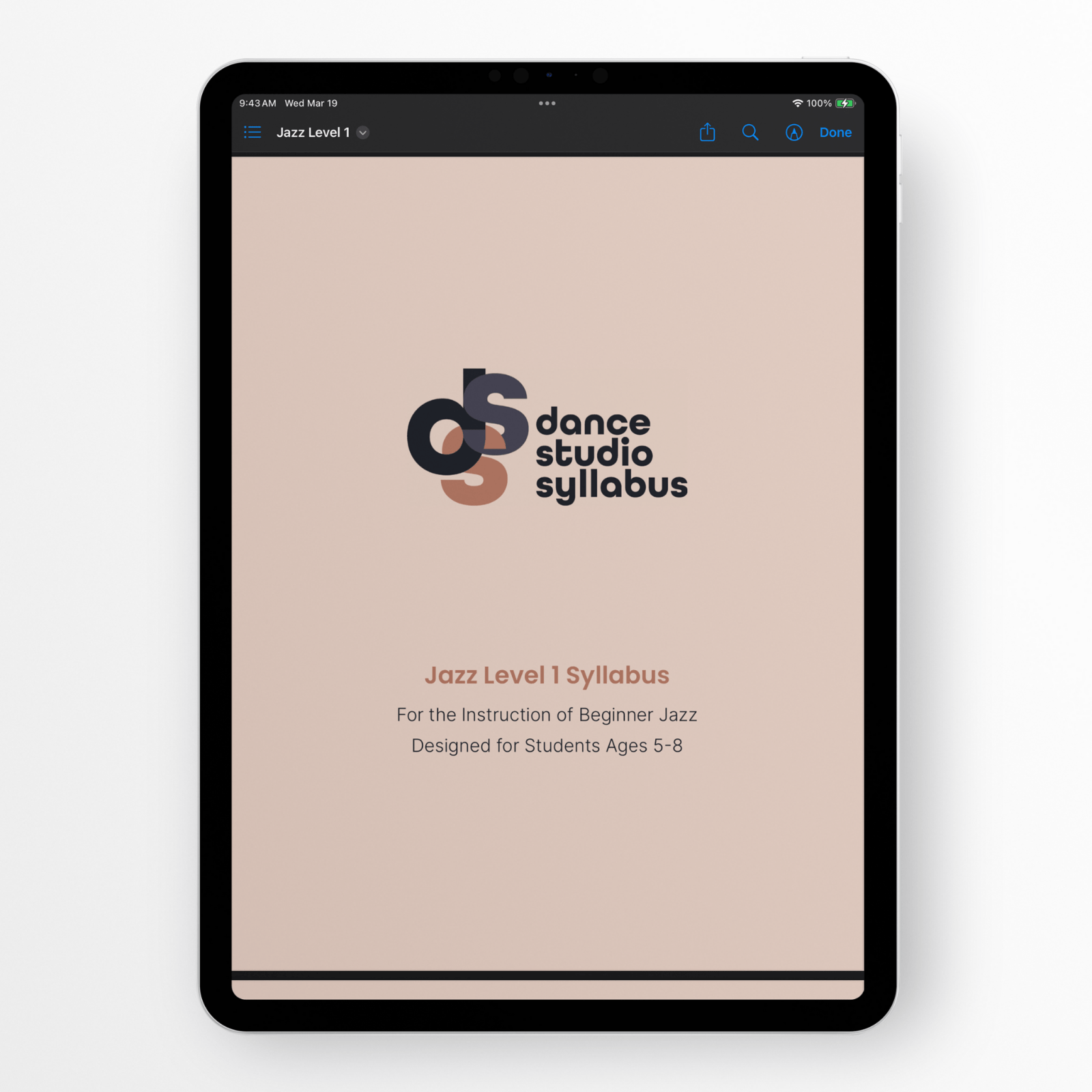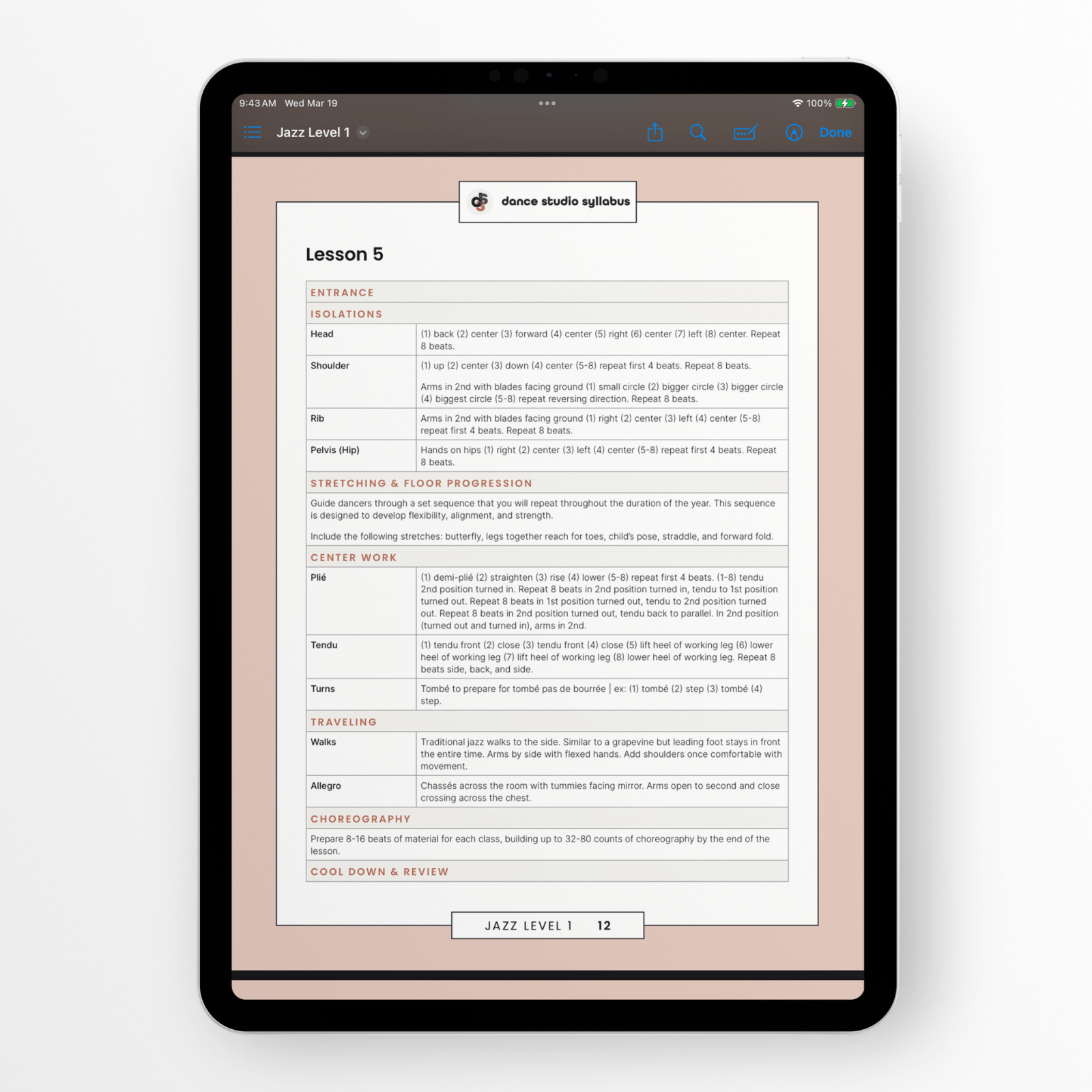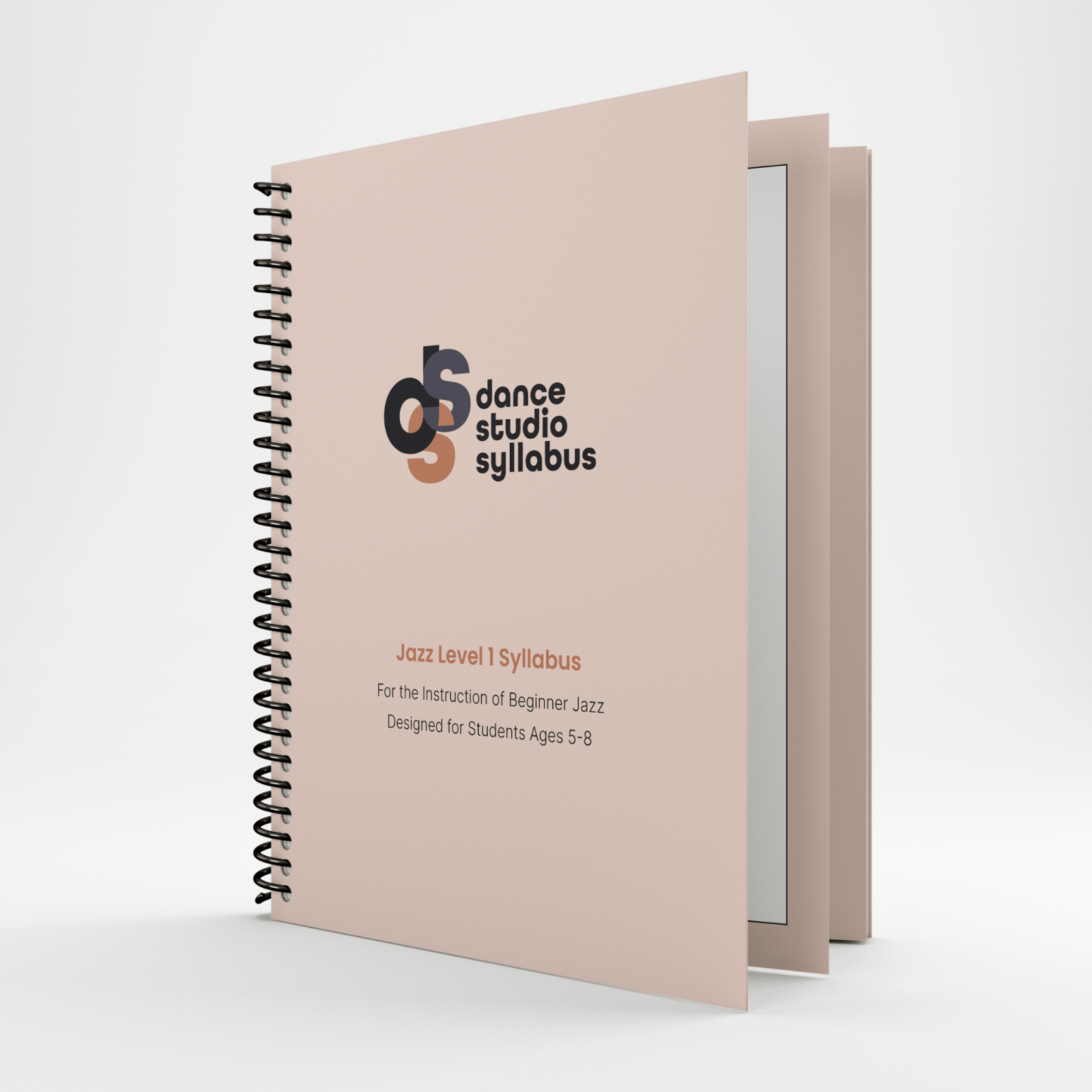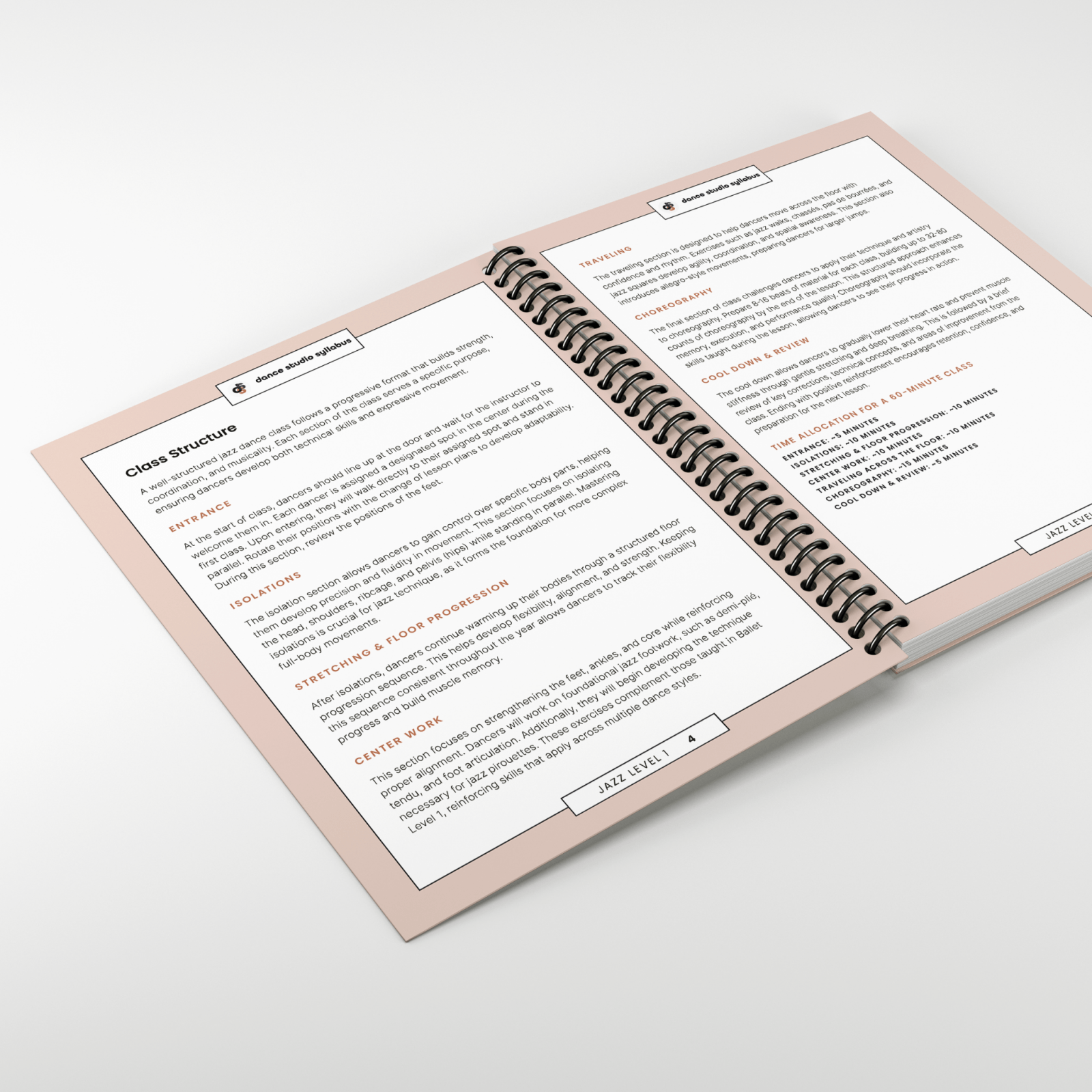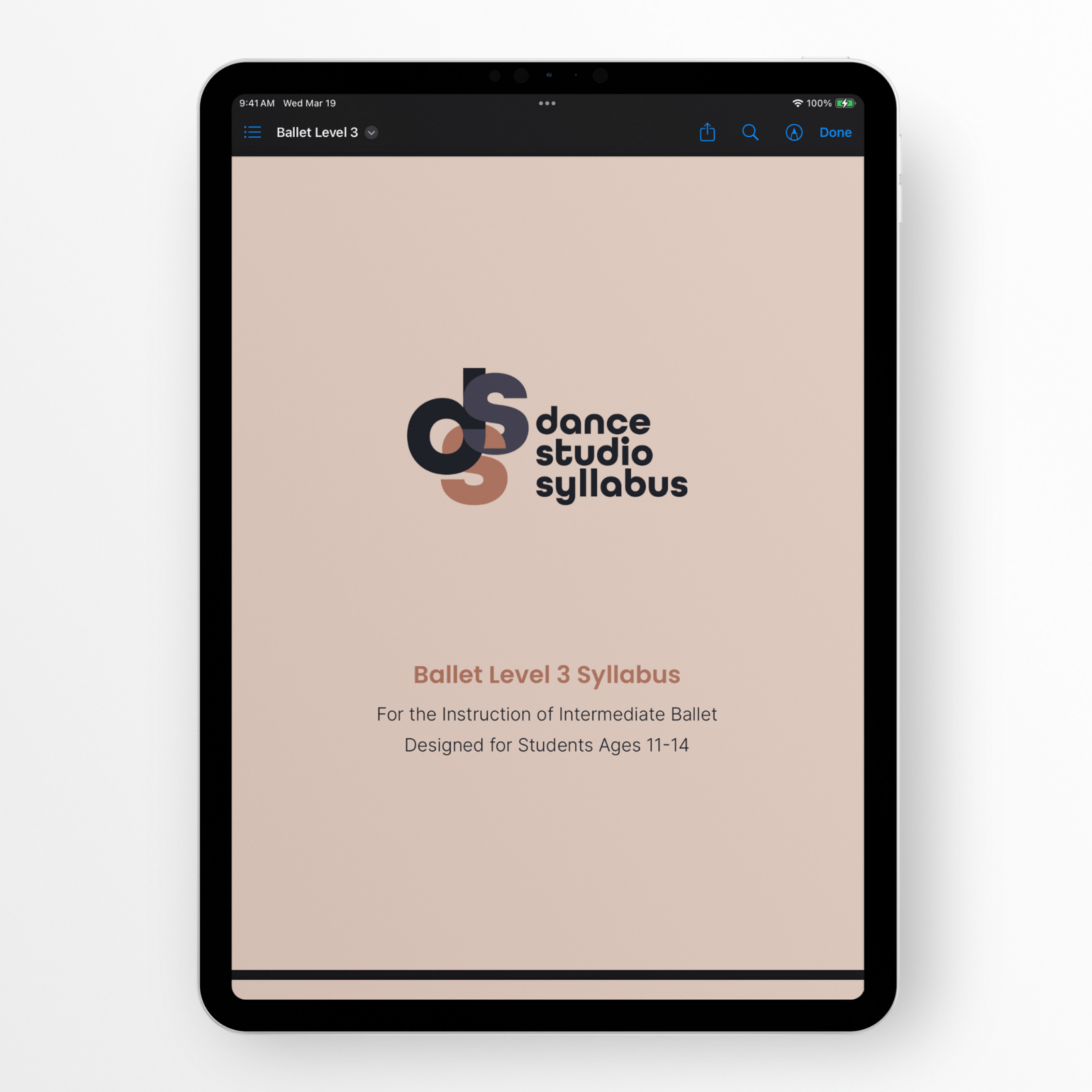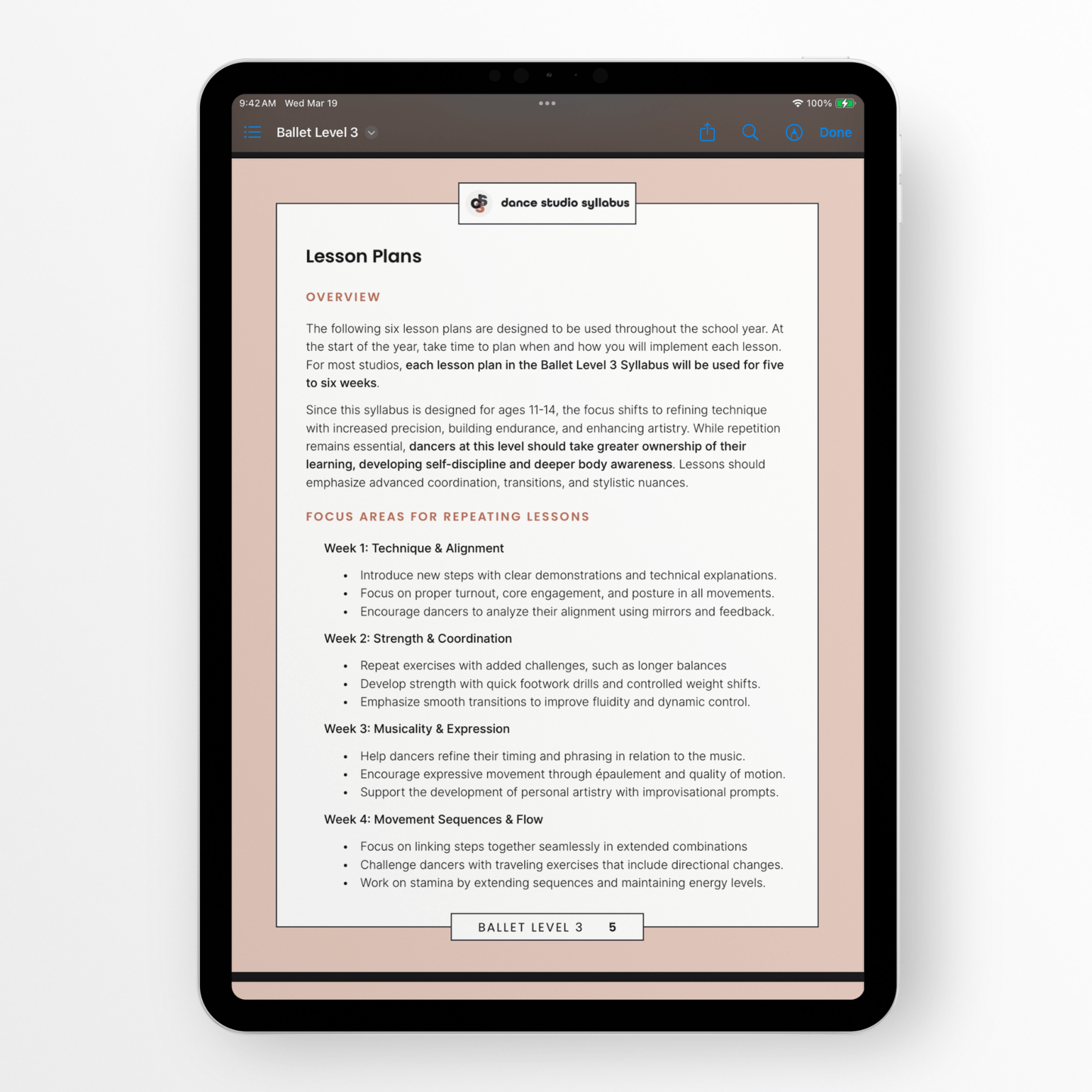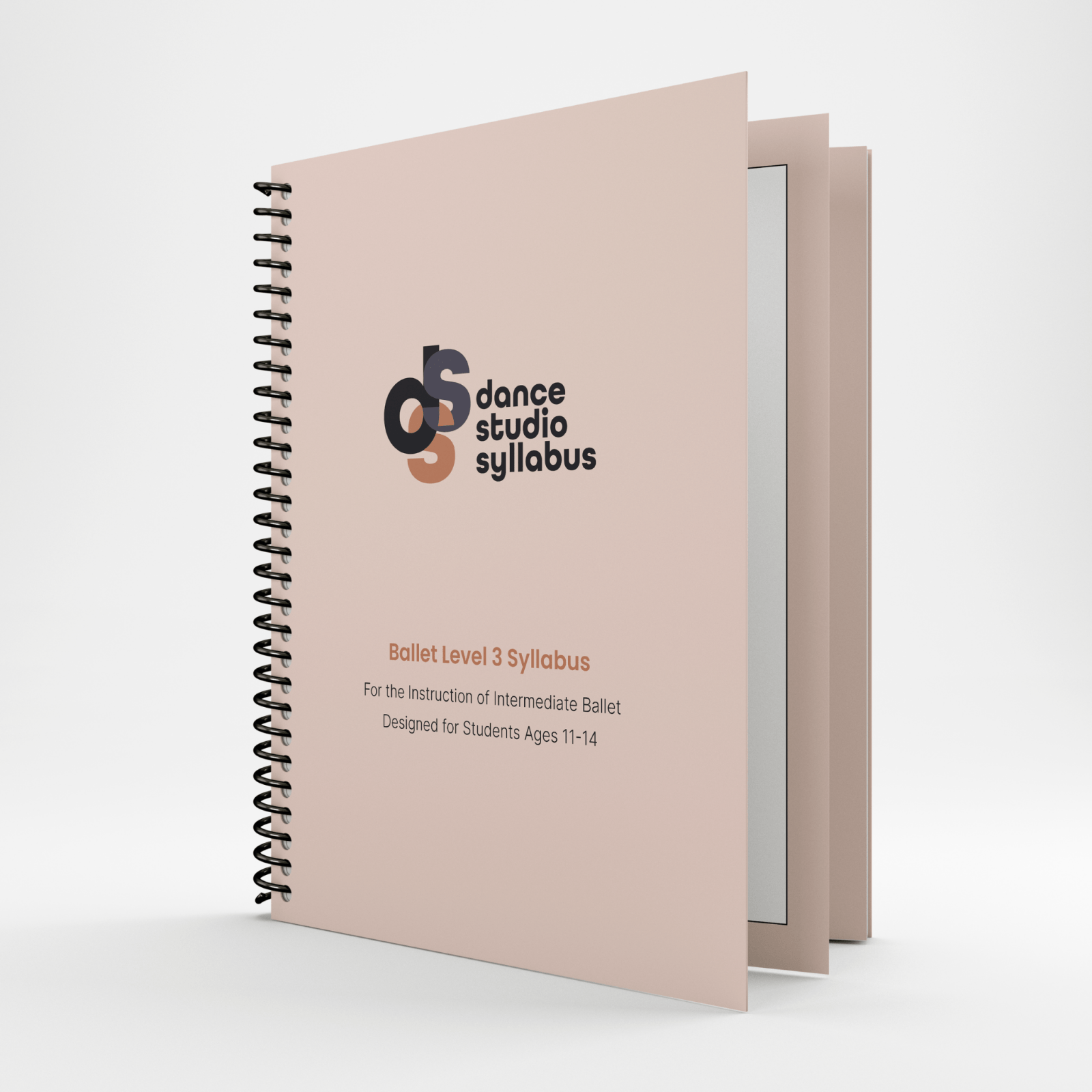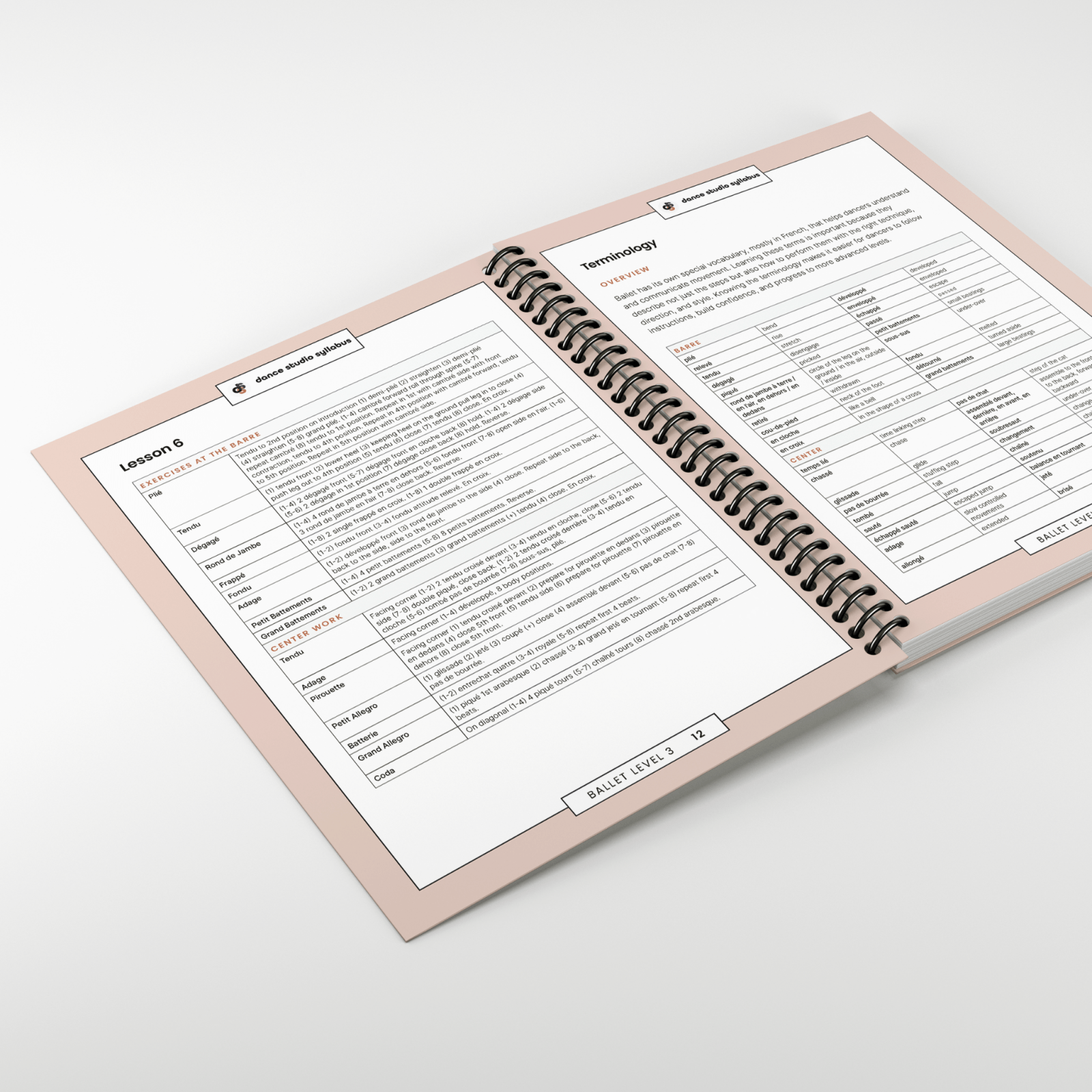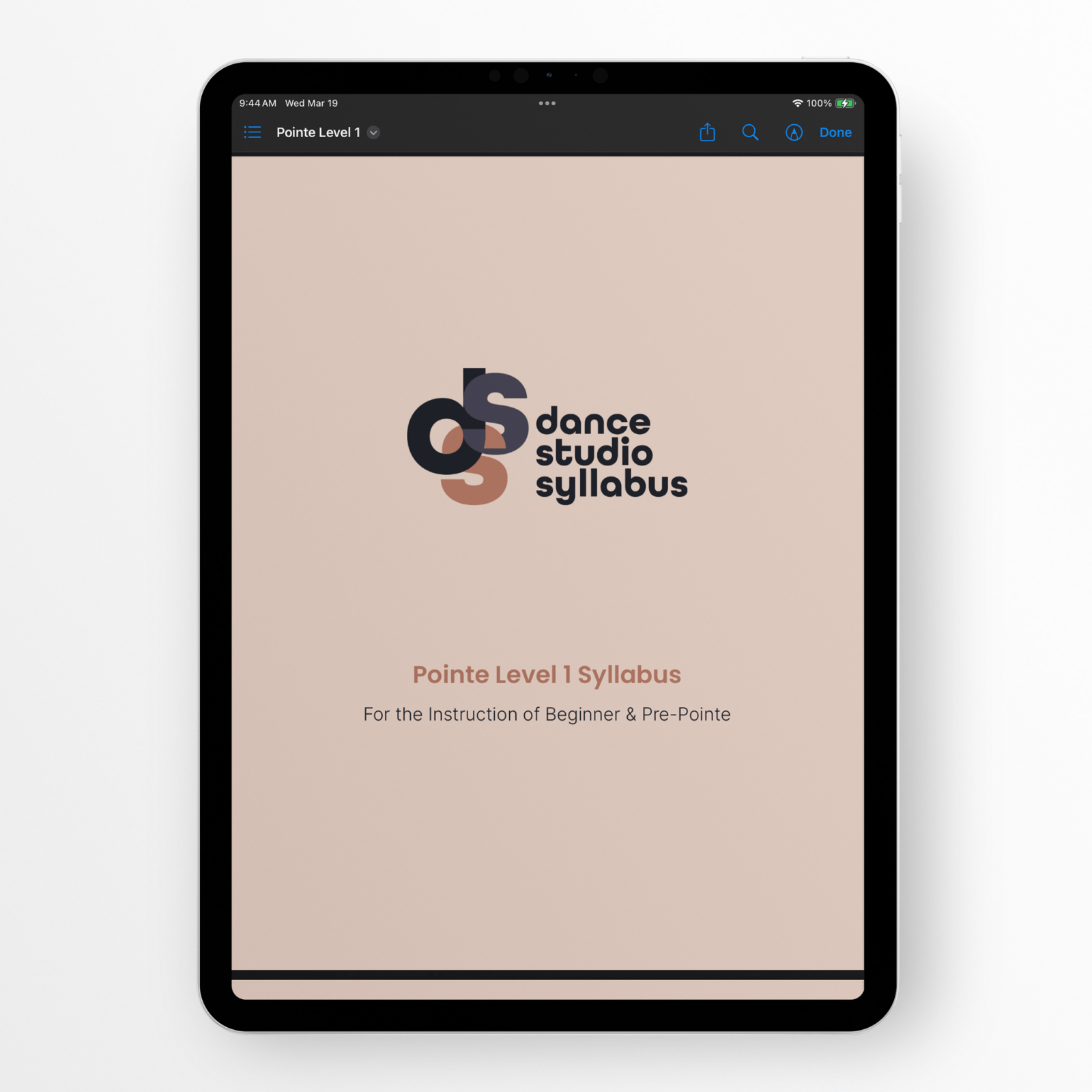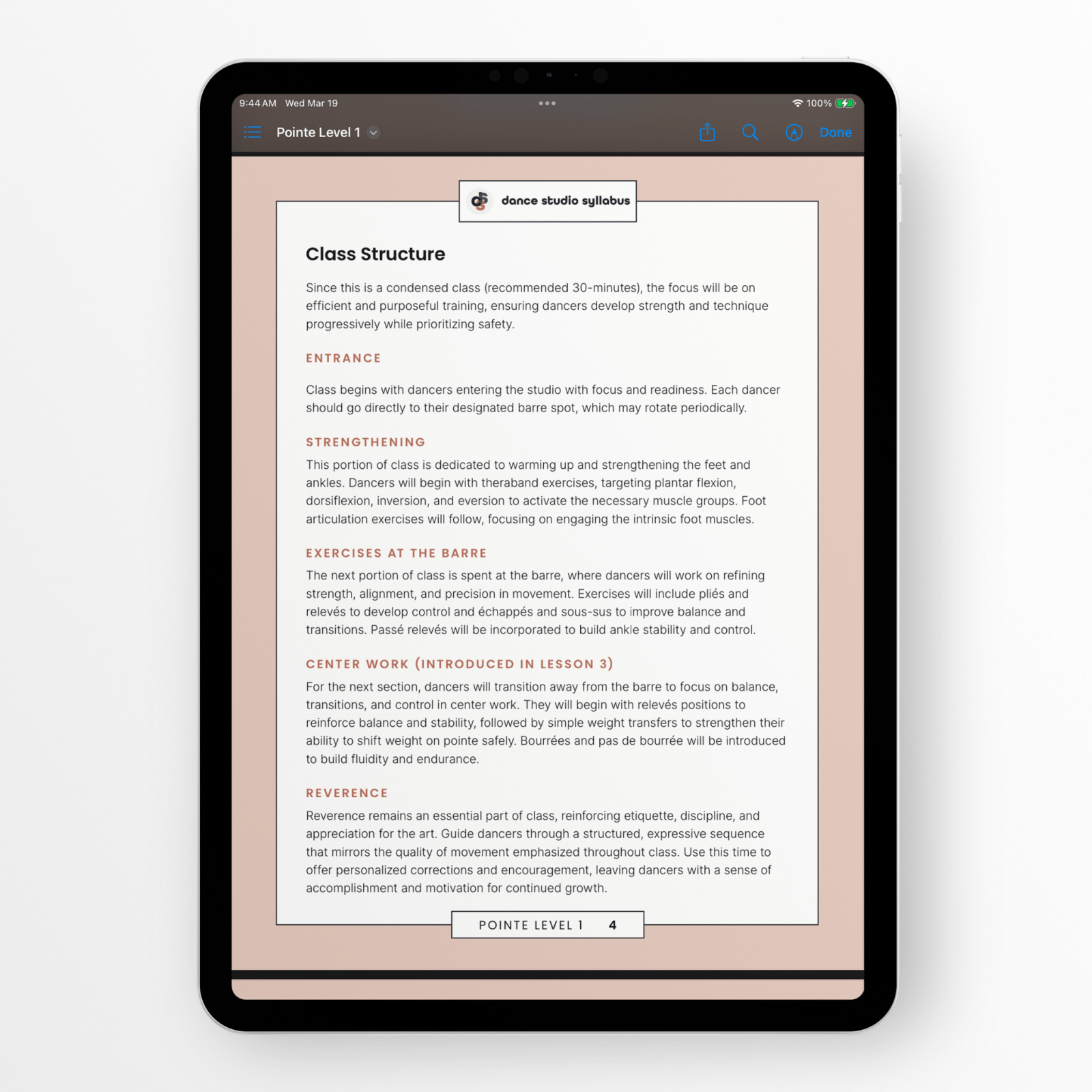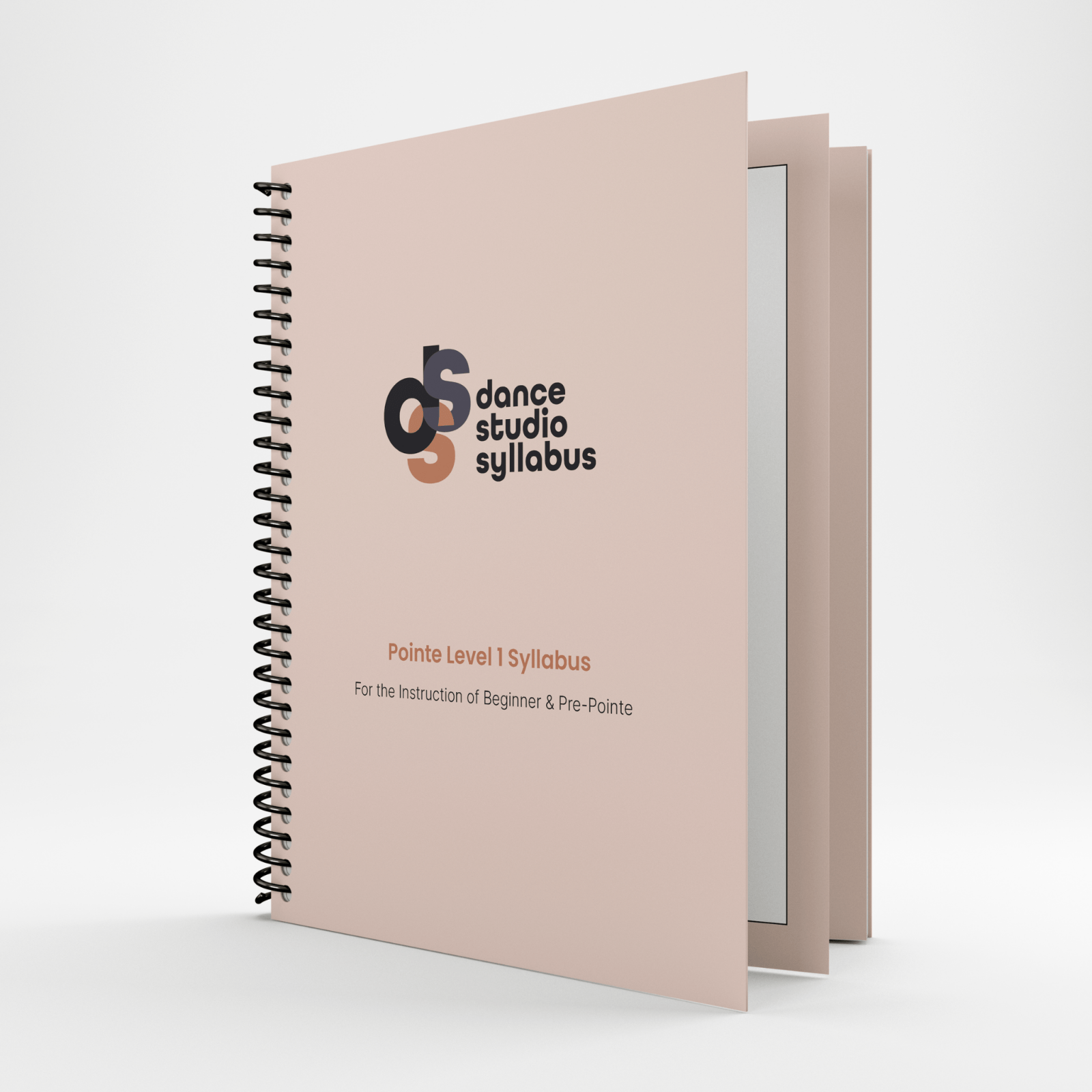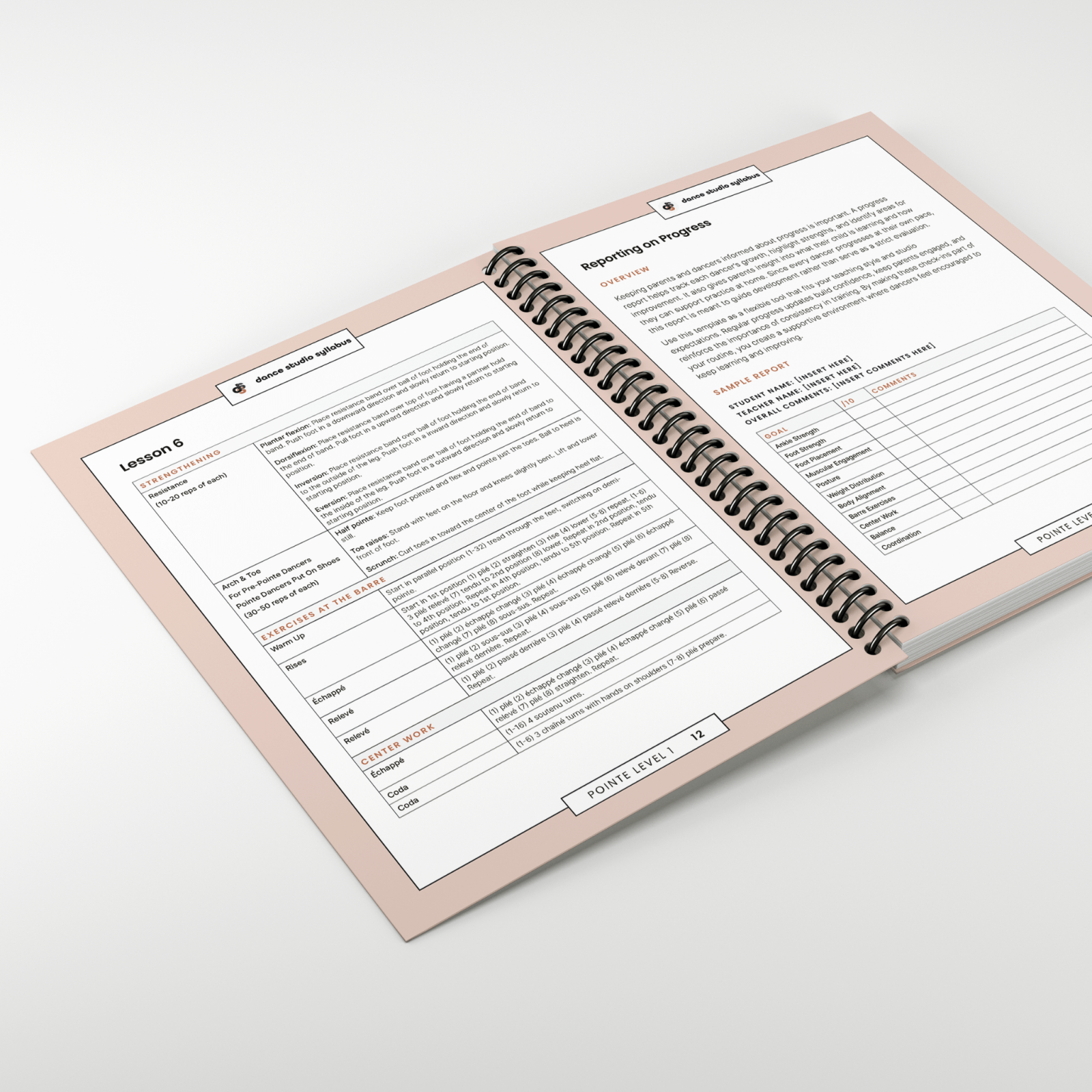As a dance teacher, I've tried all different types of approaches when it comes to lesson planning: I've created exercises on the fly (you know... coming up with the tendu exercise while dancers are doing pliés); I've outlined classes the night before in my living room; and I've built a year's worth of curriculum in great detail.
If you've been teaching for some time, my guess is you've experienced a range of something similar.
Each approach is time-consuming in one way or another, but for me investing the time prior to class (and prior to the school year) allows me to create an environment where my dancers thrive and experience exponential growth. It gives me the space to focus my energy on developing my dancers' artistry and technique instead of on creating material.
That said, here are five (of the many!) benefits of planning lessons on a yearly basis.
Benefit 1: Empower dancers to accomplish key technical goals.
At the start of a new calendar year, I set goals for myself, personally and professionally. One of my goals has been to demonstrate all exercises full out (yes, that includes the 16 fouettés on pointe...). At one point in my life, I could knock those out in my sleep. But to accomplish this technical goal as a late twenty-something proud former bunhead turned athletic modern dancer would be something different altogether. I needed a plan, so I created one.
The same is true for your dancers. An annual plan empowers your dancers to accomplish key technical goals. Your studio might have established goals for the different levels and genres. If so, uses those as the framework for your lesson plans. If not, ask your dancers at the end of the school year what they want to accomplish in the coming year. Build their goals into your lesson plans along with teacher-led, age-appropriate goals.
With an annual approach to lesson planning, you have the ability to distribute a list of goals at the beginning of each school year to dancers (and parents!) and report on progress each quarter or semester. This sets clear expectations for everyone on where to focus their efforts and what it will take to move up to the next level.
Benefit 2: Promote longevity with alignment and somatic engagement.
I've had dancers who are more injury prone than others. Some of that has to do with body structure (i.e. ectomorph, mesomorph, or endomorph), but some of that has to do with a lack of alignment awareness and muscular engagement understanding.
There were a lot of building blocks that went into accomplishing my goal of demonstrating the 16 fouettés. I needed to practice many foundational components of pointe work, including basic relevés, échappés, and pirouettes from fifth. I repeated the same exercises week after week in order to establish proper alignment and engage the right muscles.
Your dancers are no different. They need repetition and progression to establish proper alignment and to engage the right muscles. When you build lesson plans annually, you can leverage repetition and progression to help your dancers safely accomplish their goals. This prevents injury and promotes longevity by creating awareness and strength at an age-appropriate level.
Benefit 3: Spend value class time discussing and finessing artistry.
I have a two-year-old. And let me tell you, this kid has a personality of his own! One of my favorite things about watching him grow over the past few months has been the way that he has developed his sense of imagination and creative play. It comes naturally to him, and it’s so fun to watch. I see the buddings of a little choreographer as he moves around the room, placing his wooden animals in very specific places.
For whatever reason, it’s easy to lose this sense of creativity and artistry as we get older. As a dance teacher, I do everything that I can to reinvigorate this artistic freedom in my dancers. Now, that doesn’t give them a free pass on technical execution, but it does allow them to express themselves through the movement in an individualistic way.
An annual approach to lesson planning allows you to incorporate conversations about artistry and expression. It also allows you to establish a strong technical foundation prior to adding this component to ensure that your dancers are experiencing growth in technical excellence and artistic freedom. These elements are typically included in something like a Creative Movement or Pre-School Dance class, but there’s no reason why we shouldn’t keep those principles as our dancers progress in their technique.
Benefit 4: Develop musicality skills and dynamic movement in your dancers.
I remember hearing things as a young dancer from my teacher like, “Listen to the music, Kate!” “Don’t rush the tempo!” or “You’re late!”. Dance was my only real connection to musicality. I’ve never played an instrument or taken music lessons. So in hearing these corrections, I understood what was being asked but wasn’t equipped to grow in musicality or my ability to add movement dynamics that complemented or juxtaposed the music.
As a university dance student, I was fortunate to have live music in the majority of my classes. This became a forcing function for me to develop musicality skills and dynamics. When I started teaching, I made it a goal to always be able to answer questions about musicality, which was a forcing function to understand the nuances of the music I was selecting for class, for a recital, or for a production.
When you plan your lessons annually, you can intentionally select music that varies in measures and meters from month to month. Additionally, when dancers have the opportunity to embody the material technically, they can focus elsewhere, including growing in musicality and dynamics (have you noticed the importance of repetition in each of the benefits so far?!).
Benefit 5: Encourage performance level execution in class that translates on stage.
As a student, I used to roll my eyes when my teachers wanted me to “perform” in class. Ignorantly, I believed that I could turn on “performance-mode” when I got under the lights. Sure, we all turn up a little when we get on a stage, but as you know, performance level execution needs to be practiced in class in order for it to translate on stage.
I bet you can predict what I’m going to say, but when it comes to lesson planning, an annual approach allows you to carve out time to encourage performance level execution in the classroom. Maybe your studio has curtains that cover the mirrors, or maybe you are teaching a pointe class with the option to wear practice tutus. Regardless, having the space to practice in the classroom what you expect on the stage is so helpful in promoting growth in your dancers.
You can also plan in-class showcases where you give students the opportunity to watch and provide feedback to their peers. Incorporating this type of collaboration will allow dancers to begin to see what you do as a teacher and will promote a spirit of unity rather than decisiveness in your class and your studio. At quarter’s or semester’s end, invite the parents in to see the progress their dancers have made on their goals.
You may feel overwhelmed with the task at hand. Planning a year’s worth of content is no easy feat, especially when you are teaching multiple classes a week. That’s why we created Dance Studio Syllabus. We know that the majority of teachers are spending hours each week creating content and not getting paid for that time. That can quickly lead to burnout which for the sake of your sanity and the next generation, we certainly don’t want!
Check out our print-friendly annual lesson plans for classes of all ages. We built these to give you the space you need to empower dancers to achieve technical goals, promote longevity with alignment, finesse artistry and creativity, develop musicality and dynamics, and encourage performance level execution in class.
